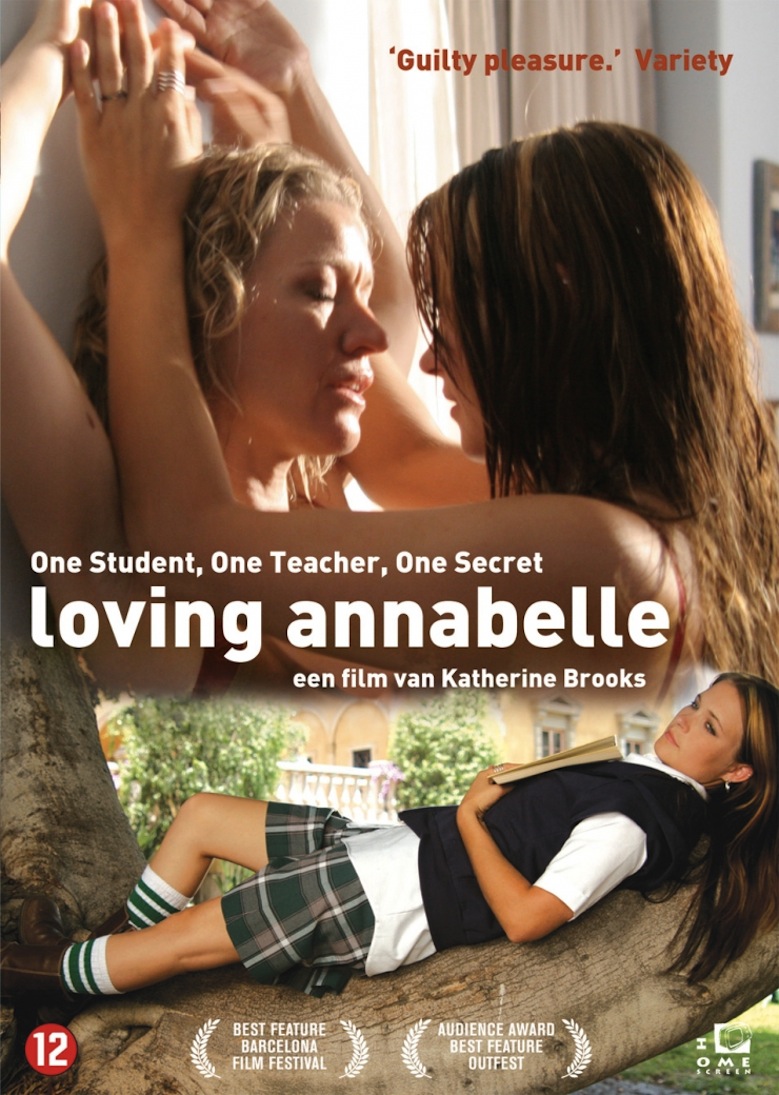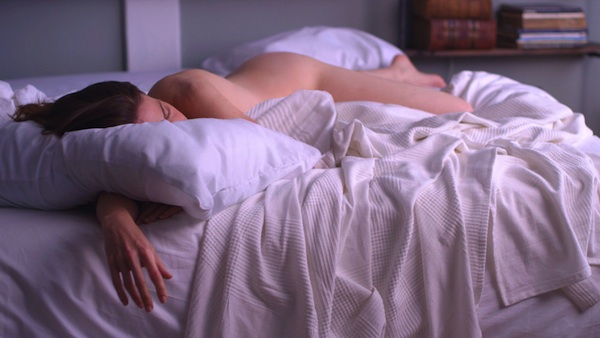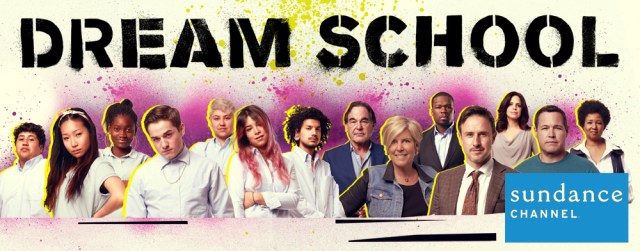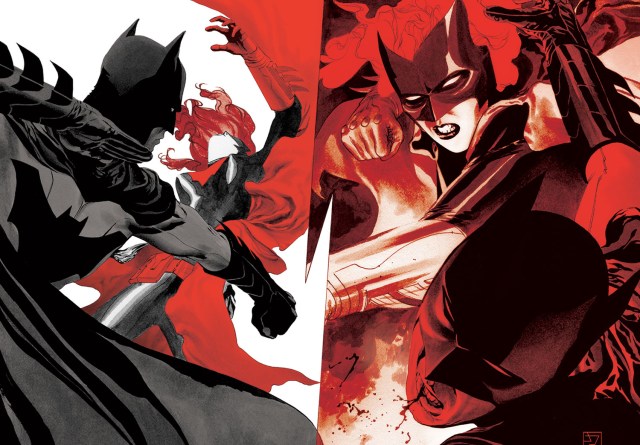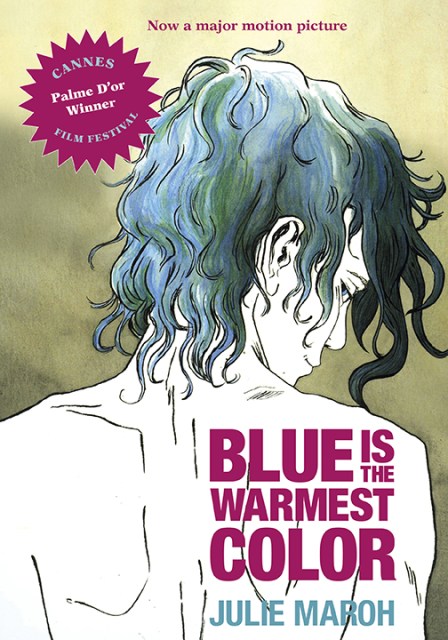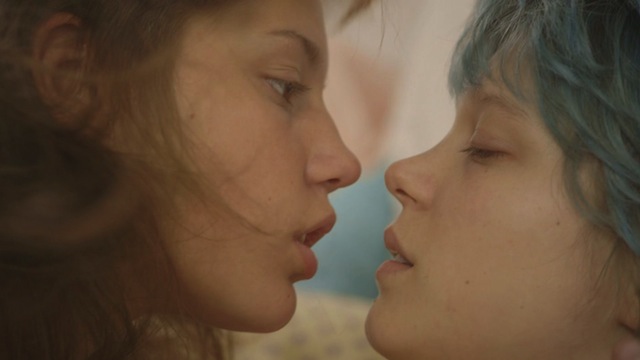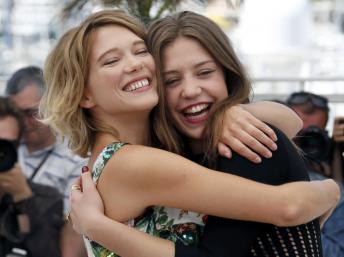22 Lesbian/Bisexual Movie Covers Featuring Women’s Faces Just Inches From Each Other
Say what you will about the human race – that it’s in need of an Atlantis- style restart, as one example – but what an array of emotions we’re capable of experiencing! Dogs have like panic and joy, cats have disdain and getting spooked, and bugs just seem constantly stressed. But humans, we get them all. And every one of us engage with these emotions in our own unique way!
Oh, besides women experiencing love towards other women. Yeah, those women pretty much only have one way to express that emotion, and it’s like this: with their faces just inches from each other, mouths slightly open like they’re about to kiss but not actually kissing, no, no, no, it’s too taboo, perhaps they will never kiss and just exist in this void until the end of time. Women who love women experience love in the upside down world, where occasionally their heads follow suit. Remarkable.
How do they do it? What is it like? These and other questions. Let’s turn to a medium with an unparalleled look into this phenomenon. Dim your lights, won’t you? It’s time for a special presentation of Lesbian/Bi Movie Covers: My Face is Close to Your Face.
Girl Play
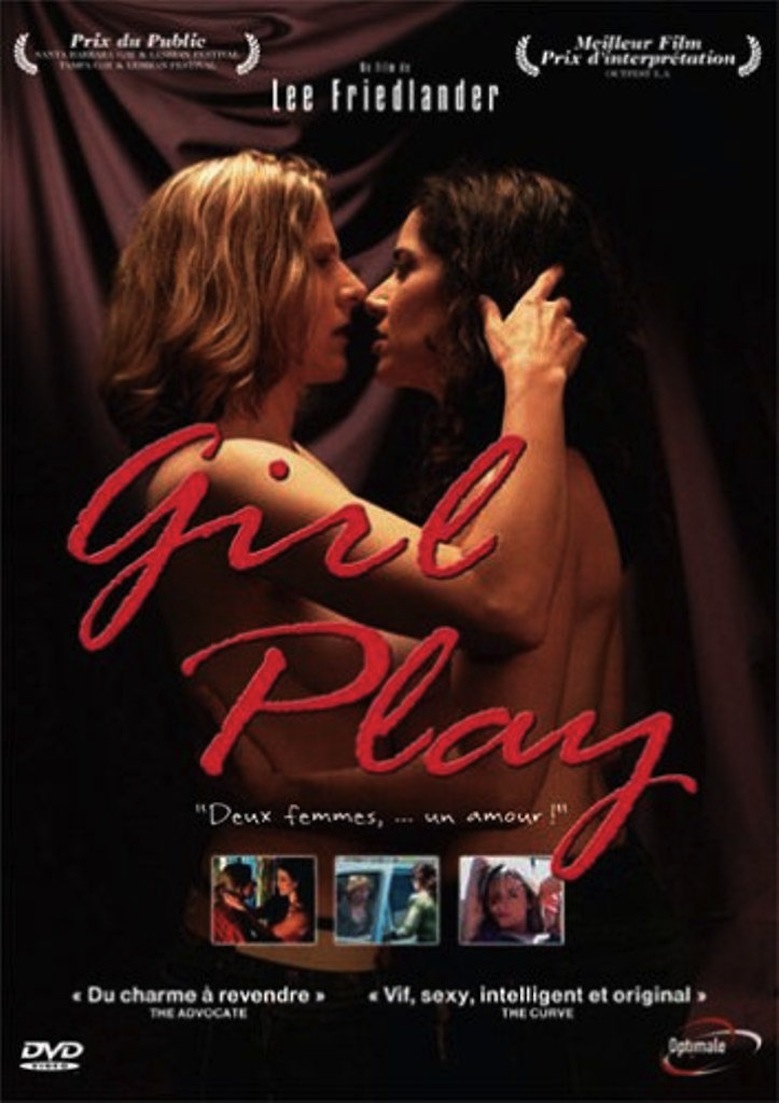
A New York Love Story
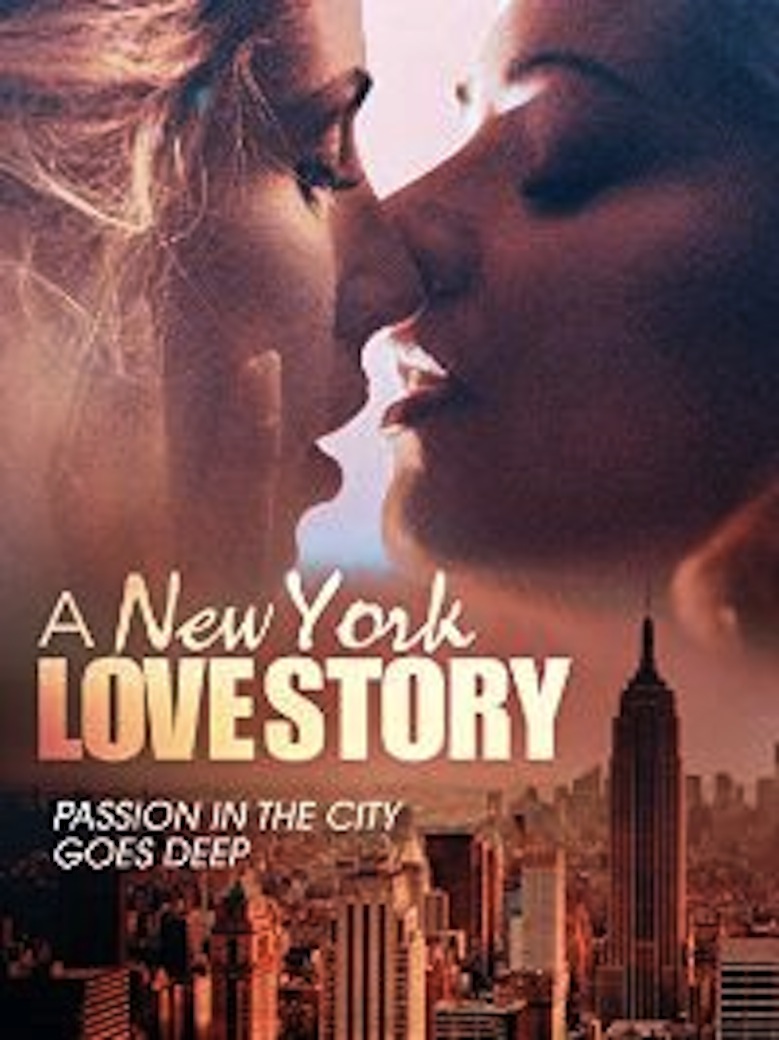
passion in the city goes just barely there
Loving Annabelle
Ties of Love

And Then Came Lola
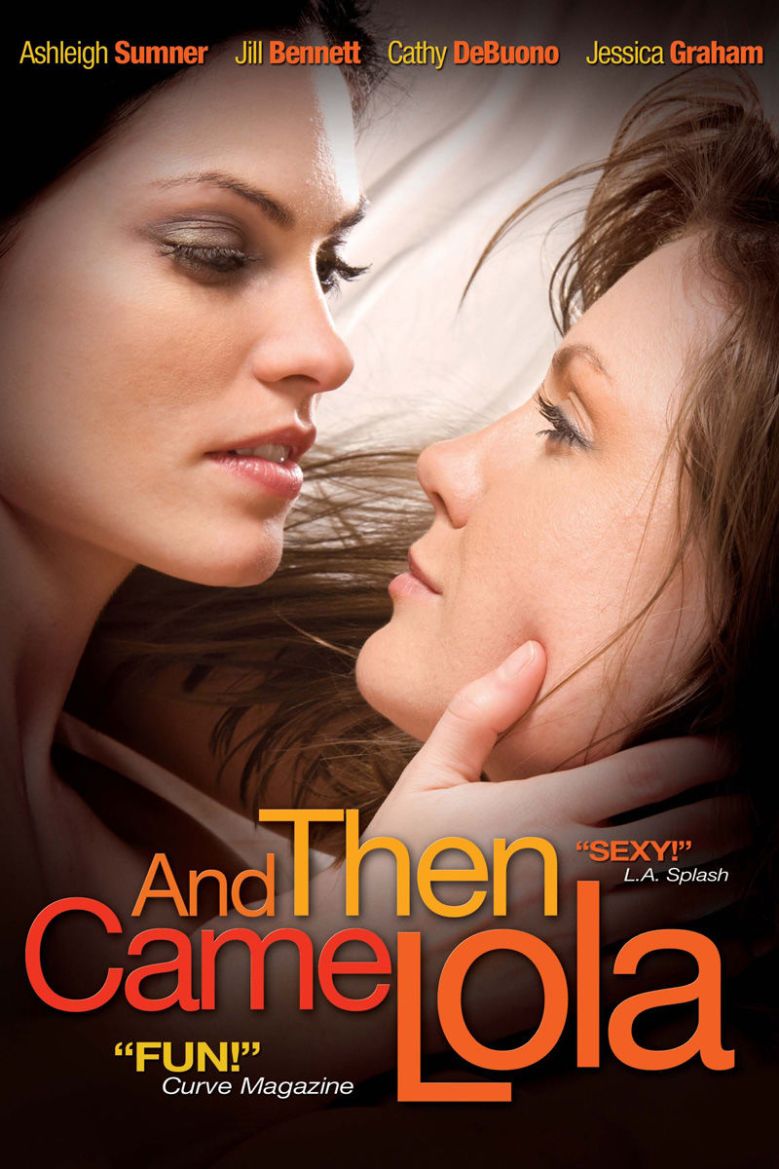
A Perfect Ending
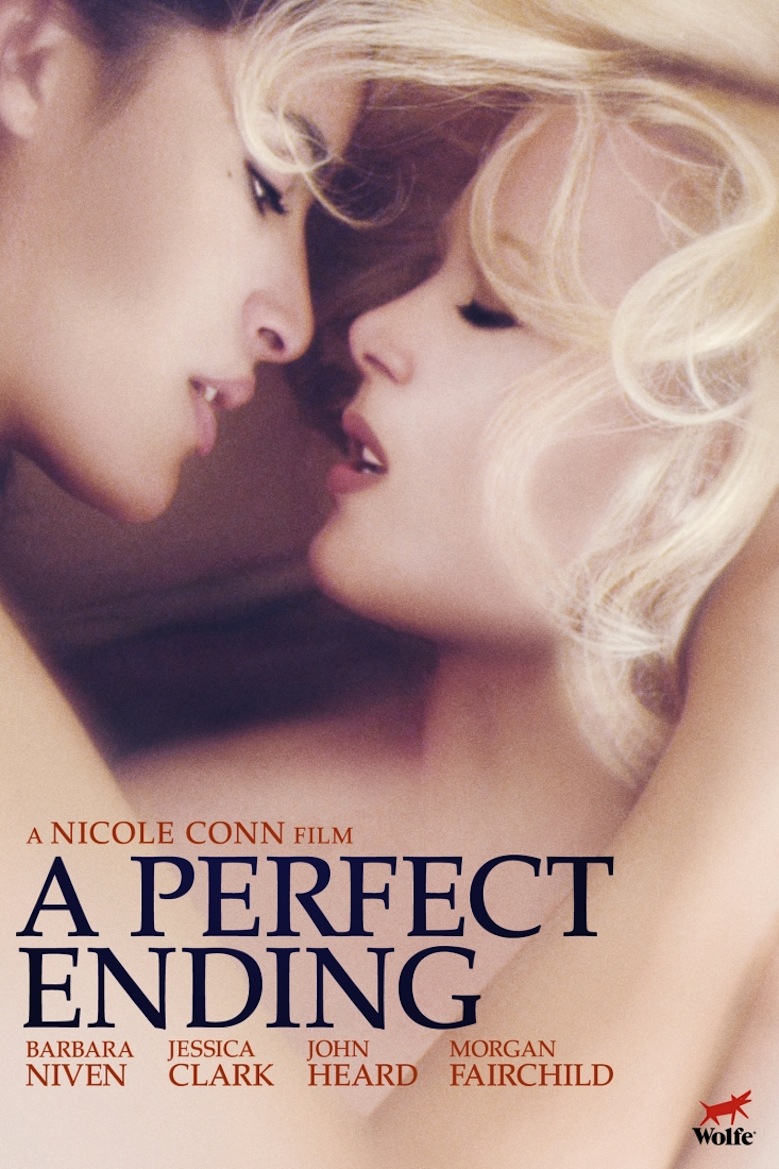
Alto

Blue is the Warmest Color
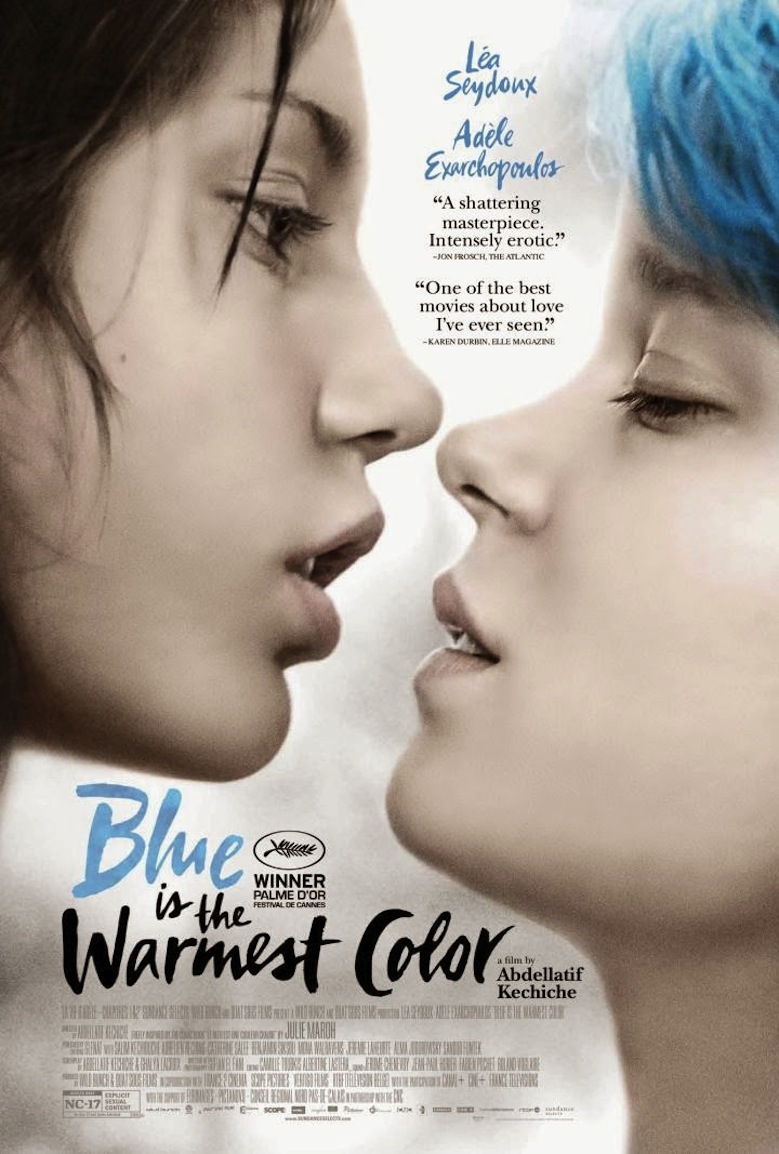
Butterfly

Freeheld
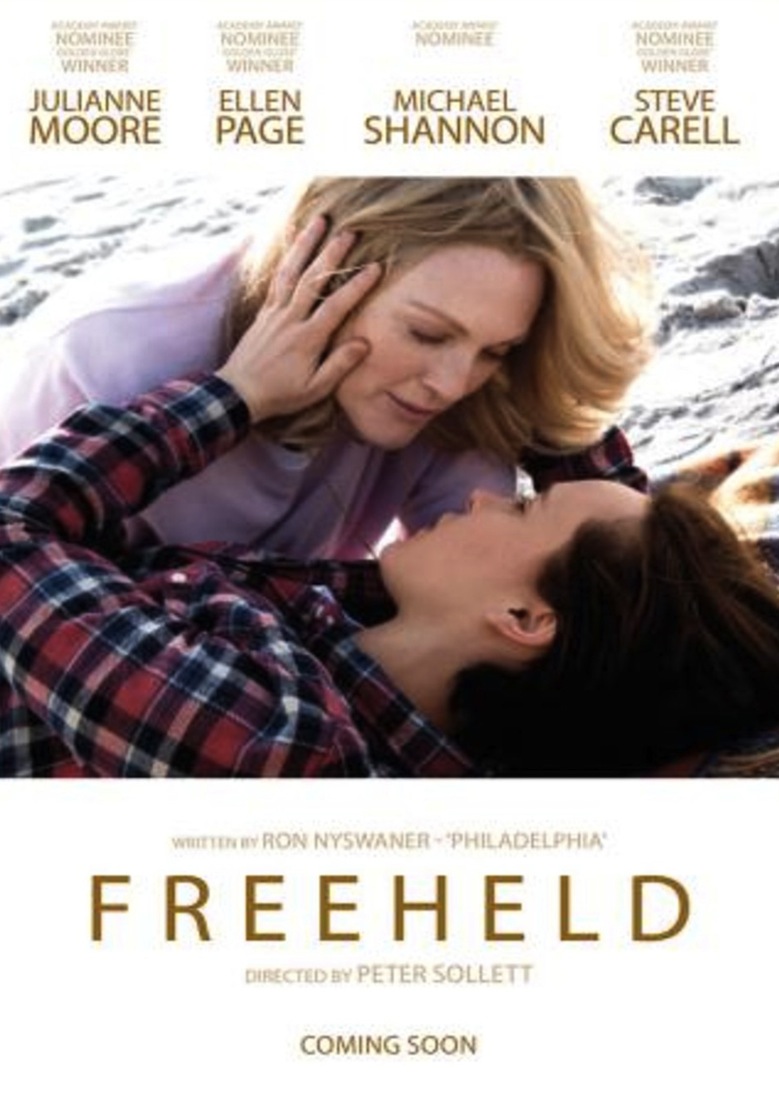
Bye Bye Blondie
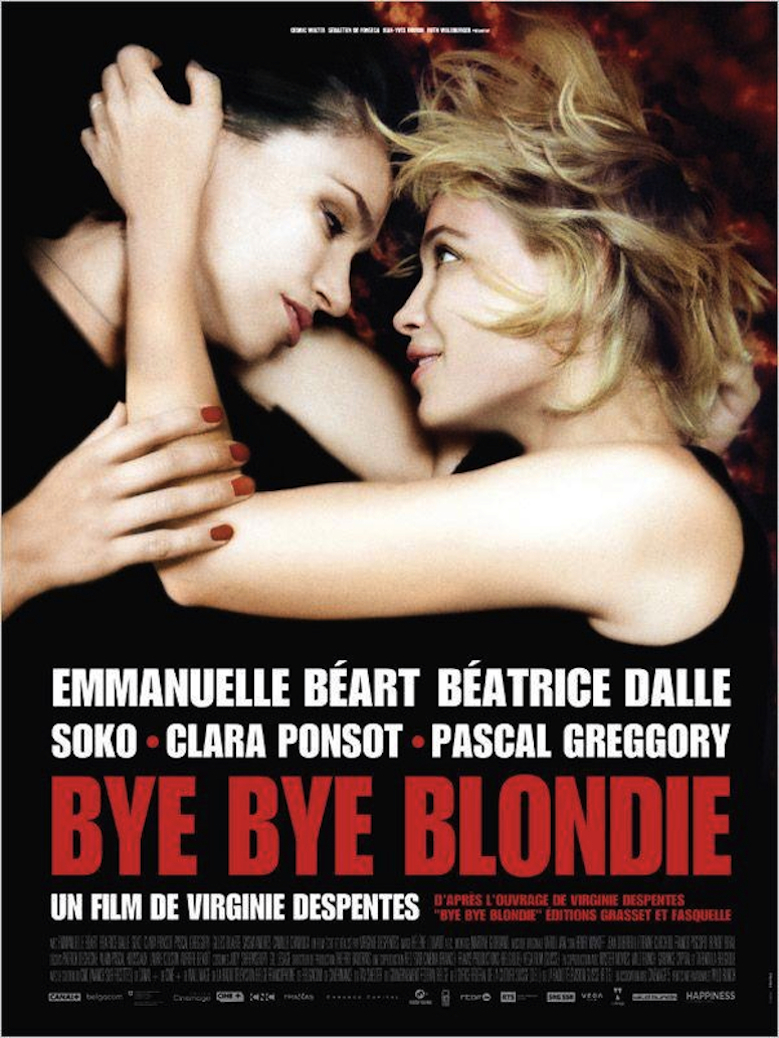
Kamikaze Hearts
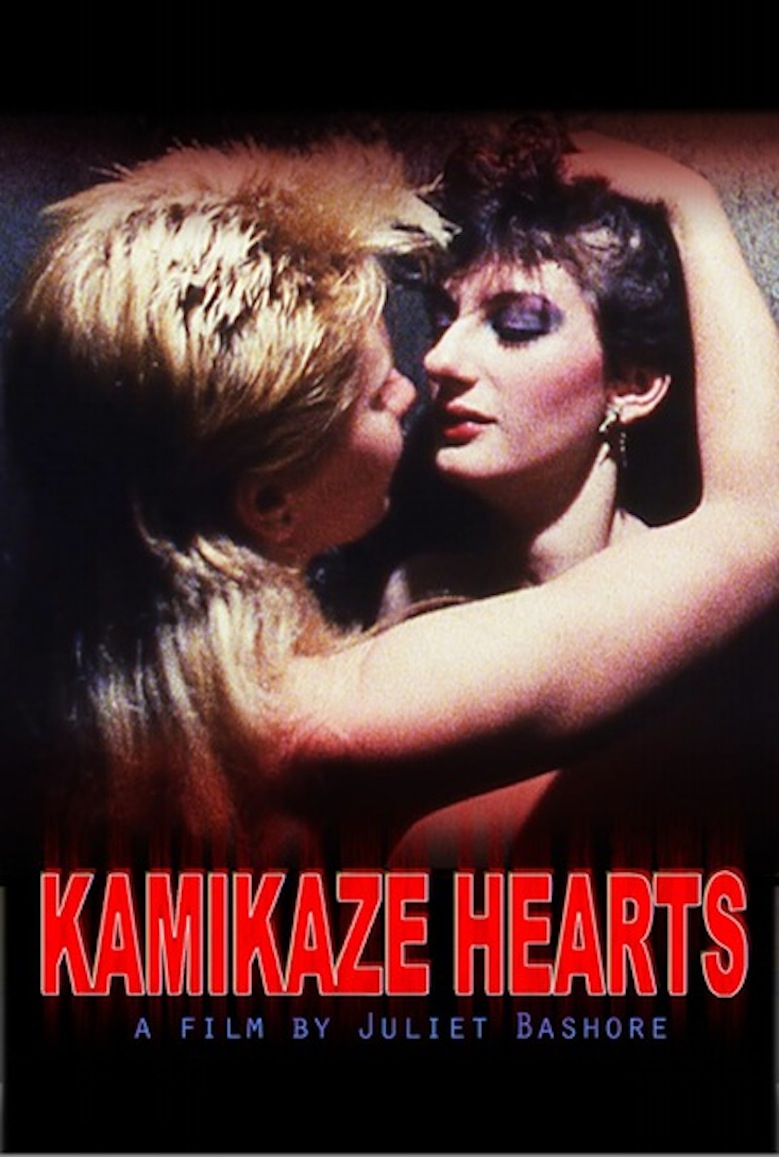
Kiss Me
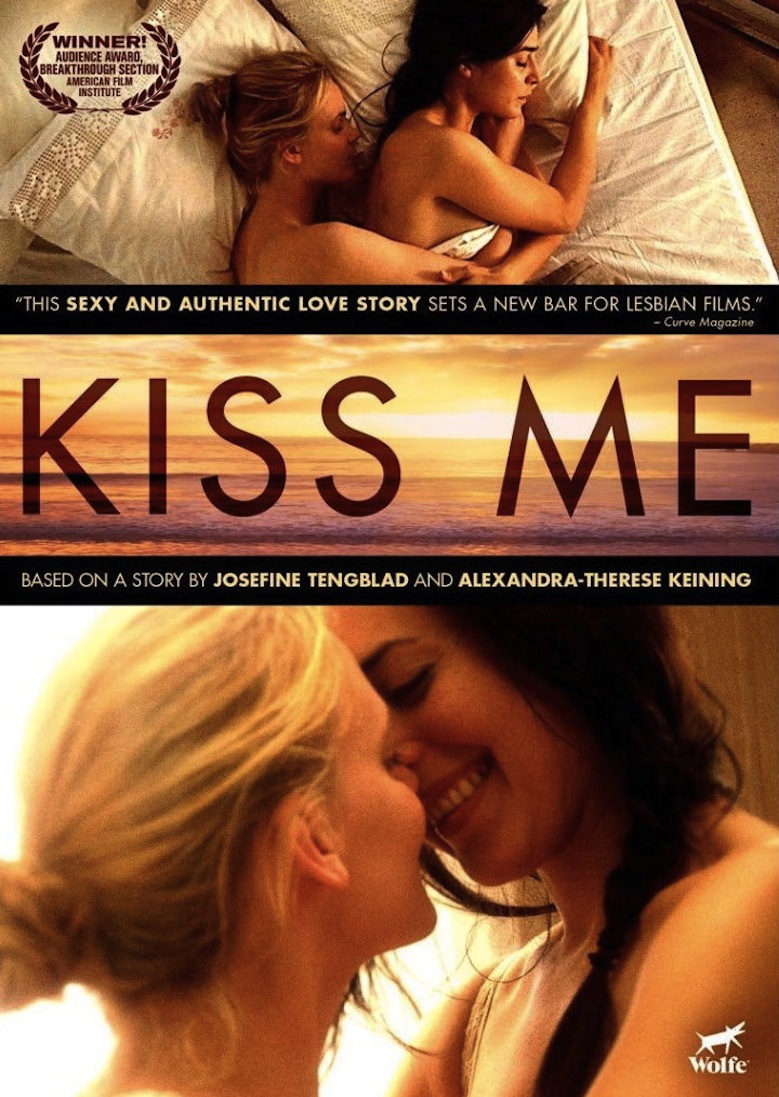
Summertime
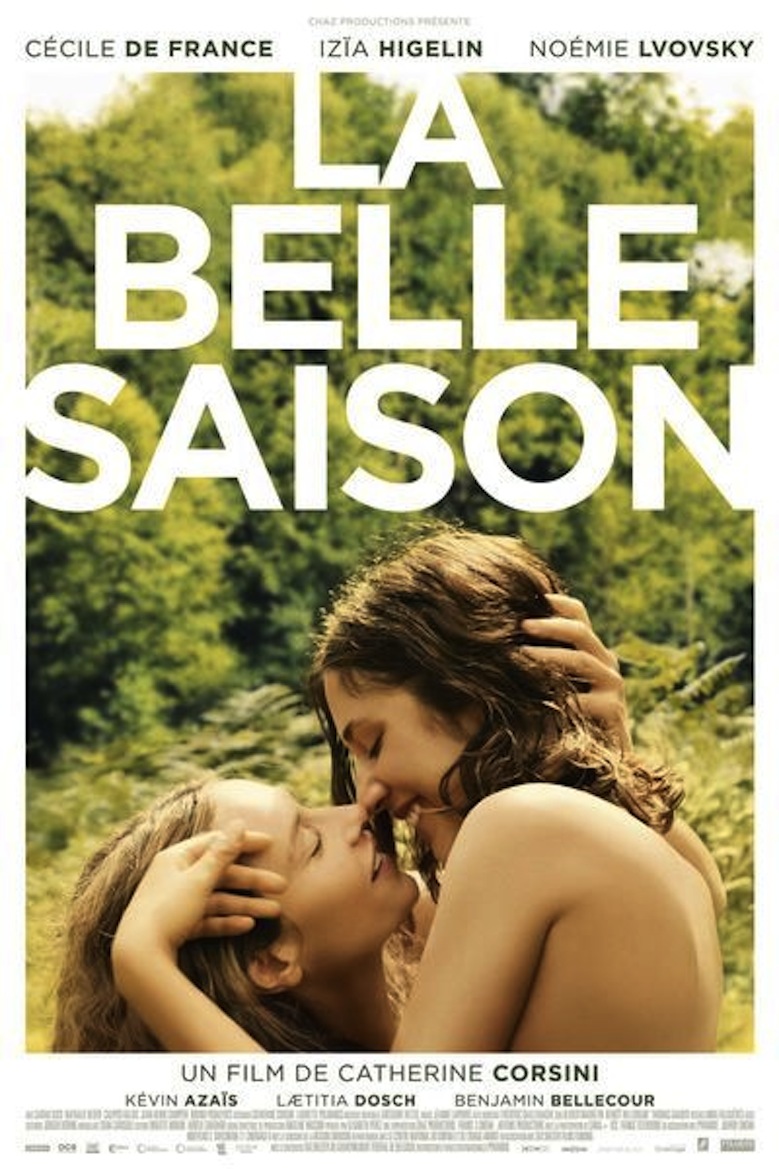
Lightswitch
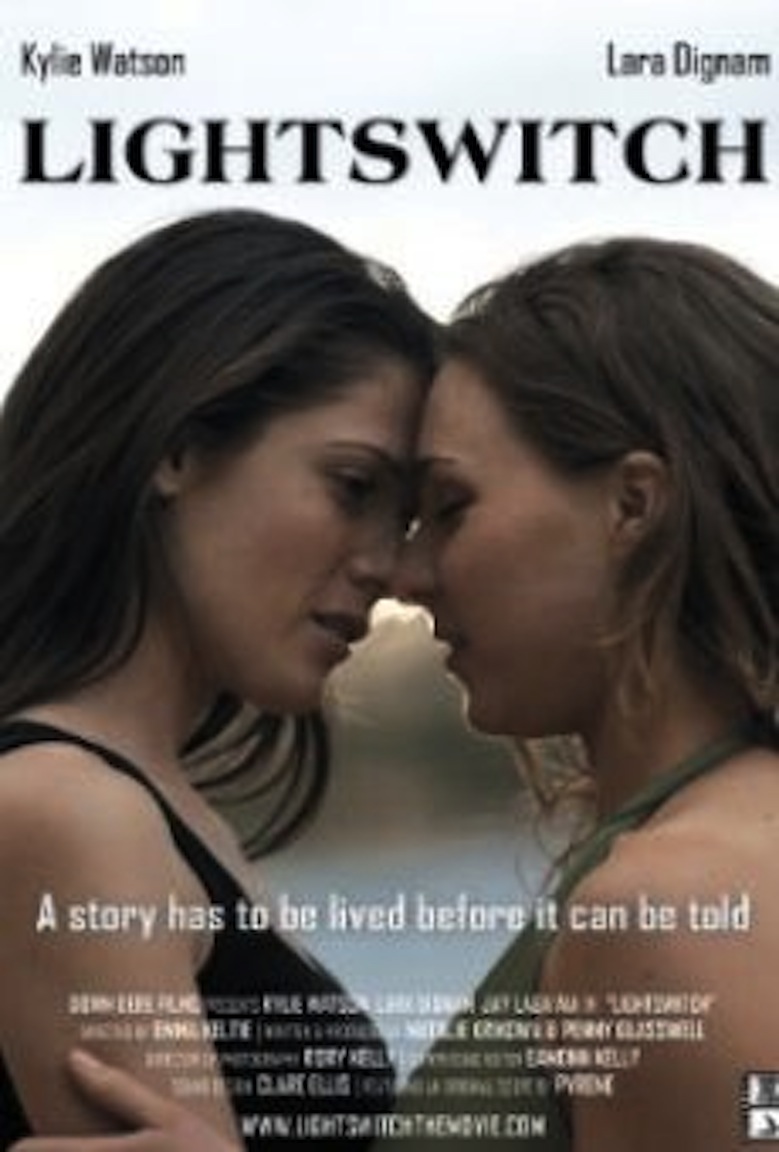
Liz in September
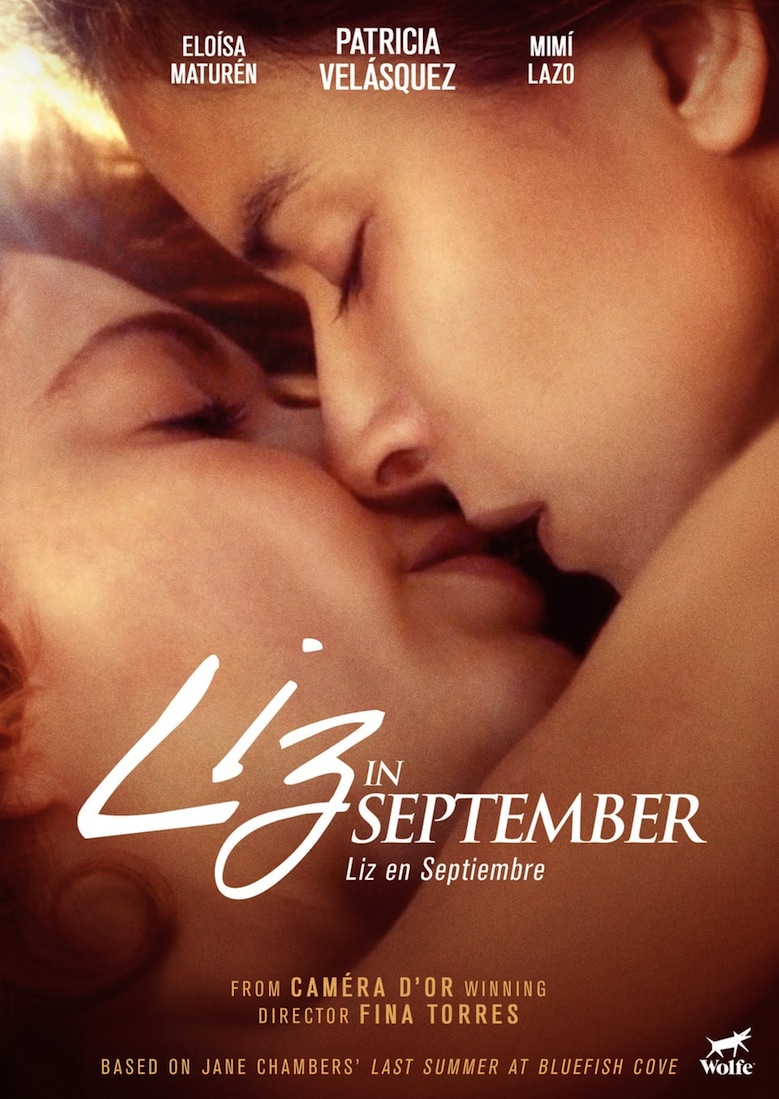
Lost and Delirious
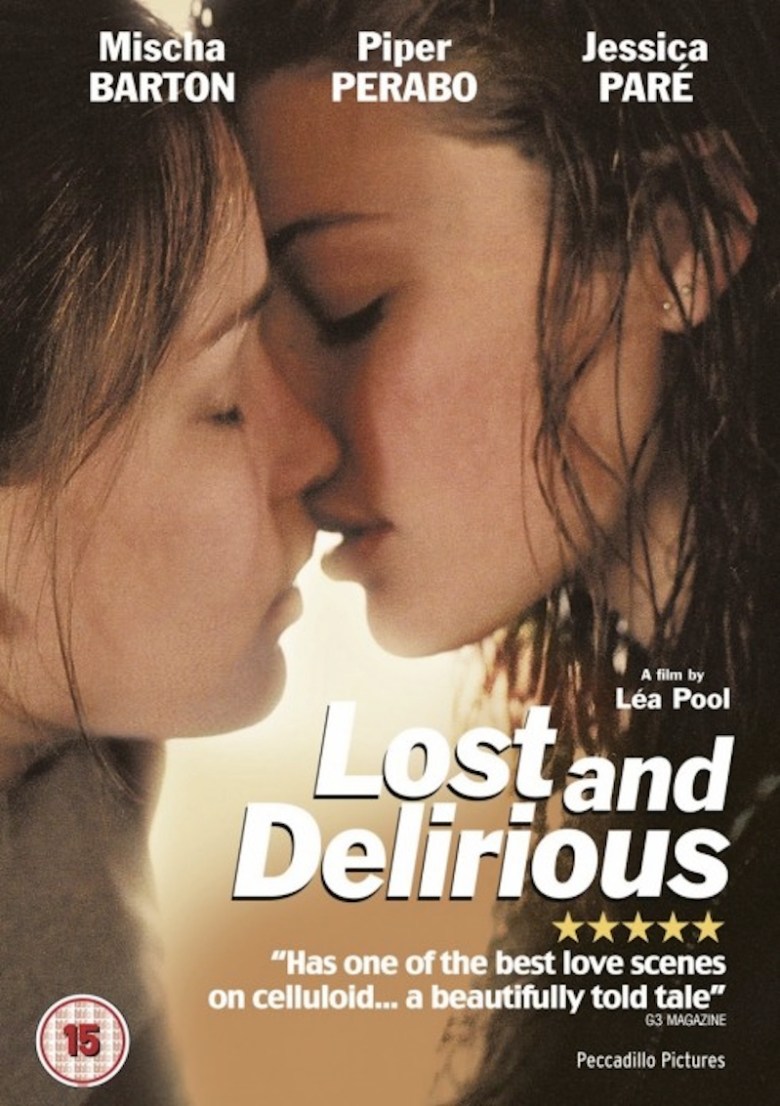
Anatomy of Love Seen
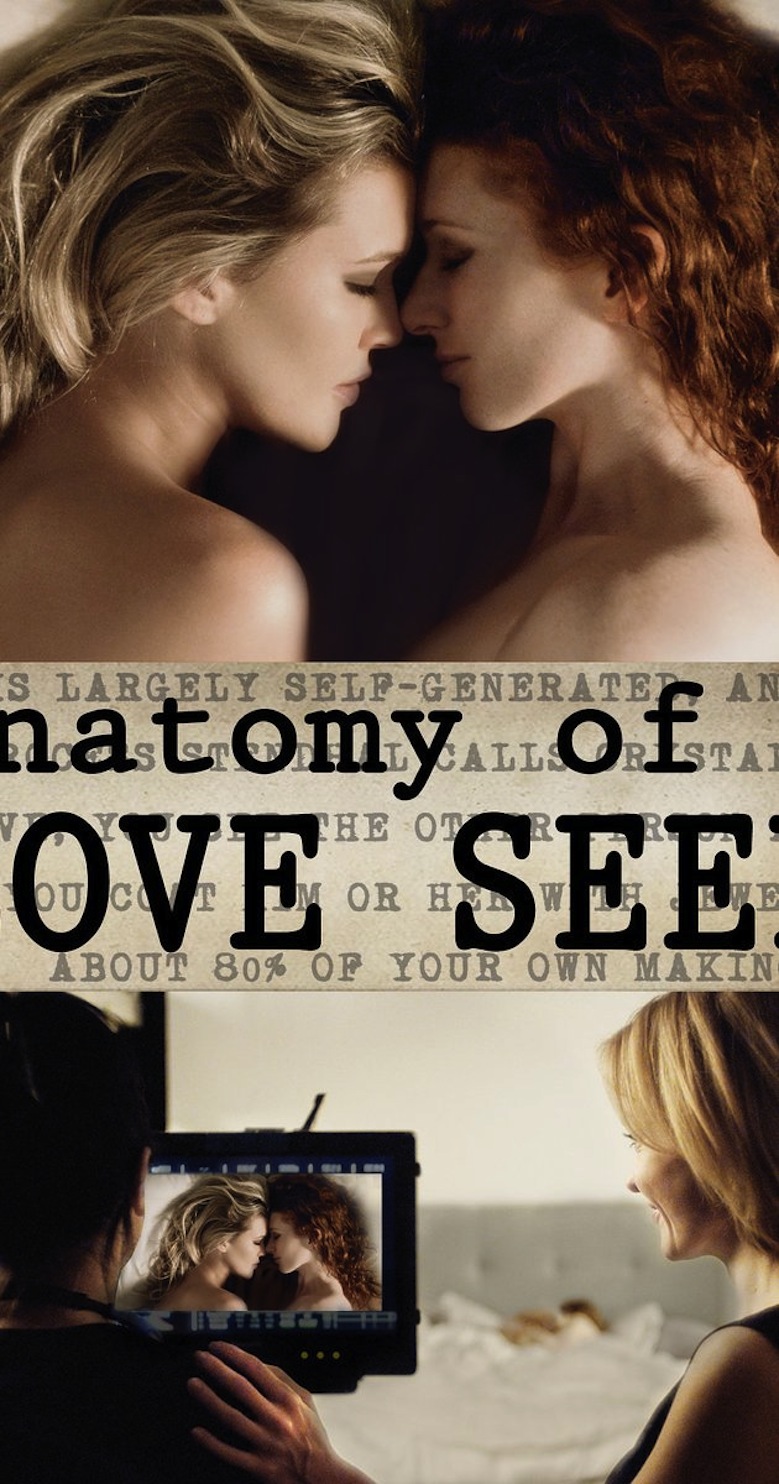
My Normal

Carol
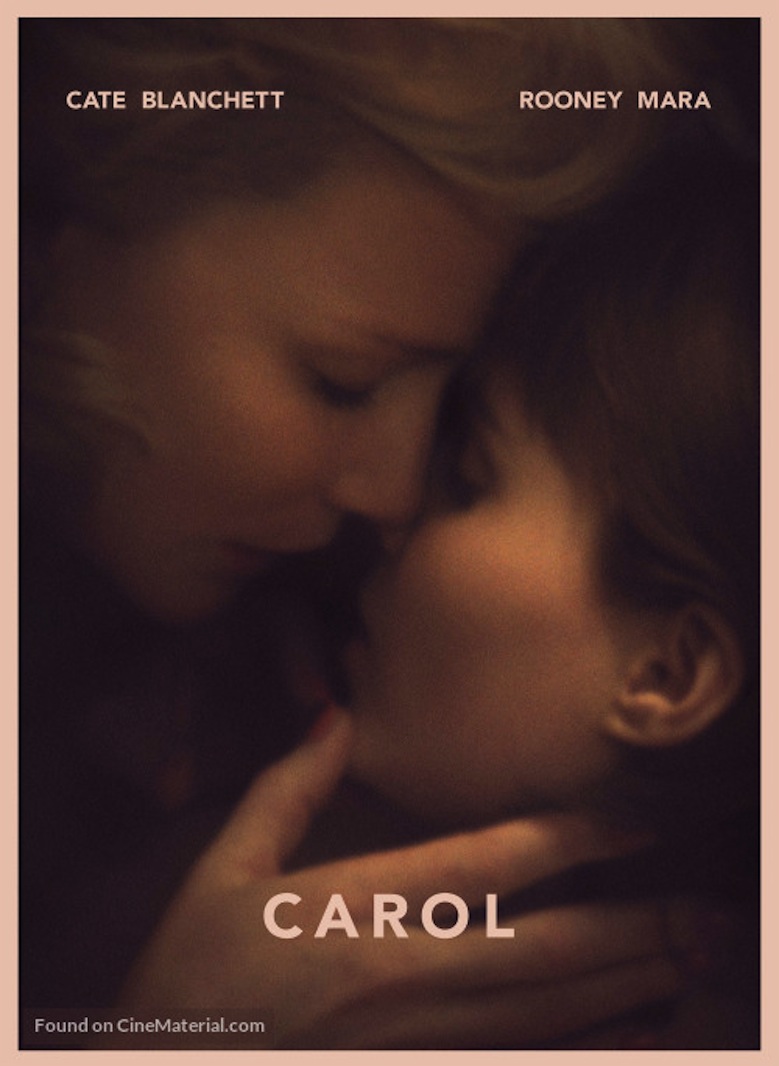
While You Weren’t Looking
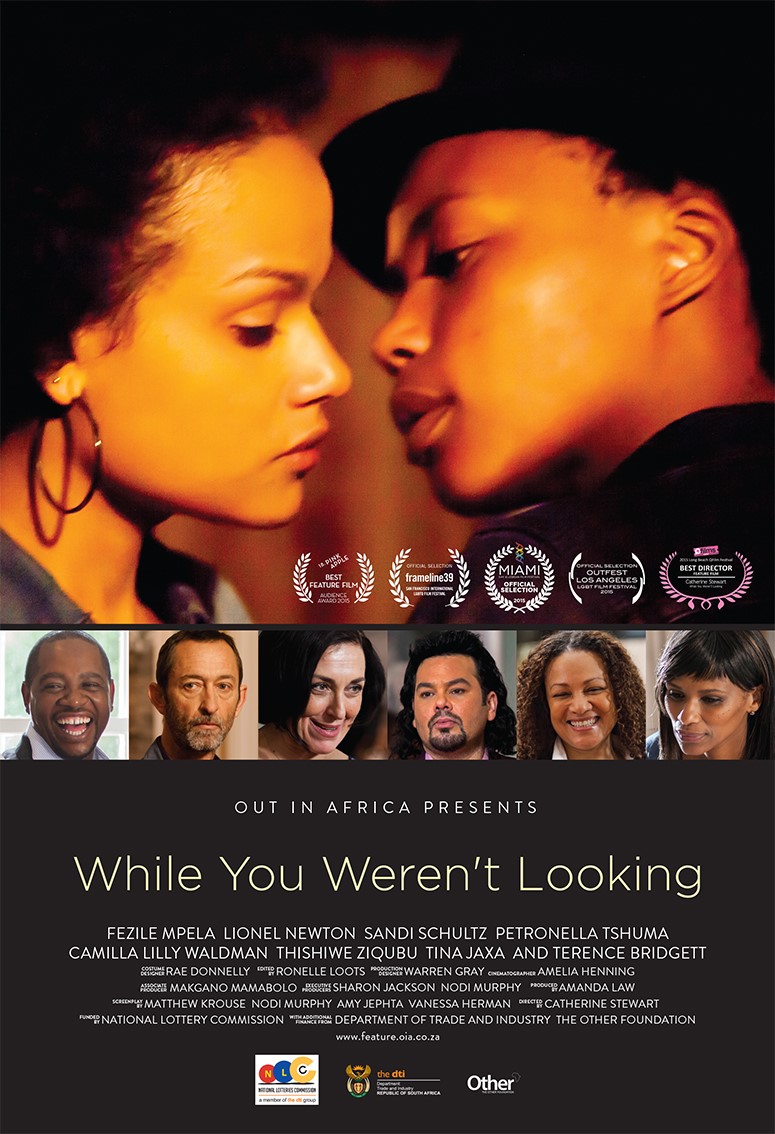
Romeo and Juliet
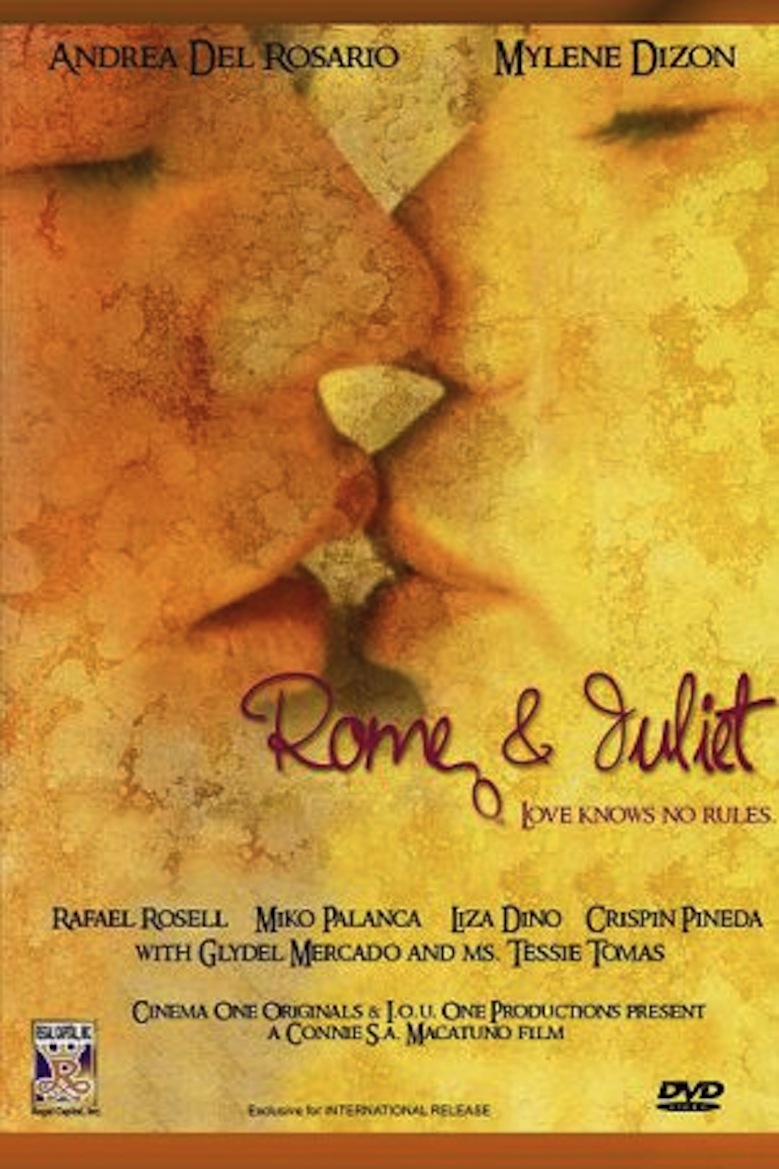
The Seven Most Influential Lesbian Movies of The Last Seven Years
Despite the strides queer women have made on TV in the past seven years, the big screen has mostly eluded us. It’s hard enough to get a movie made with a straight female lead. Getting a movie made with a main lesbian character — thereby cutting her off from a big-name male co-star as romantic interest — is basically impossible. 2015 was the exception to this rule, but it’s important not to mistake a moment for a trend. Below are the seven most influential lesbian/bi/queer movies that have been birthed into the world since our own birthday in March 2009.
They are, you’ll notice, overwhelmingly, glaringly, painfully white. We’ve come a long way, baby. We’ve got a long way to go.
The Kids Are All Right (2010)
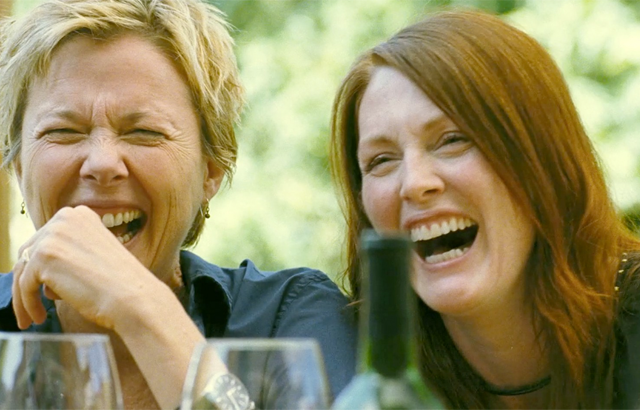
The criticisms of The Kids Are All Right are scathing and they are valid. The film centers on a man — the sperm donor for Annette Bening and Julianne Moore’s two children — to the point of one of the lesbian moms having an affair with him. During the press tour, Director Lisa Cholodenko even notoriously said she didn’t make the movie for queer women: “I was much more interested in reaching out to the male population than I was concerned about alienating a sector of the lesbian population.”
Lesbians sleeping with dudes is one of the oldest, most offensive tropes in the book, and it’s particularly discouraging here because of the sad fact that the movie probably wouldn’t have been made by a major studio if it hadn’t included a central storyline for a man.
However, it’s impossible to overlook the The Kids Are All Right‘s significance. It won the Golden Globe for Best Motion Picture in 2010 (and Annette Benning won the Globe for Best Actress), and was nominated for a four Academy Awards as well. Focus Features distributed the beloved lesbian classic Imagine Me & You in 2005, but it didn’t make much of a splash at the box office or receive any critical acclaim with mainstream viewers. This was Focus’ first time dipping their toes back in the lady pond and it paid off enormously. That coupled with the success of their other award-winning gay film, Brokeback Mountain, was the catalyst for Focus Features investing in other queer-themed films, and it proved to serious actresses that playing gay could translate into trophies.
Also, the ending is pretty happy and no one dies. In 2016, that’s still a big deal!
Freeheld (2015)
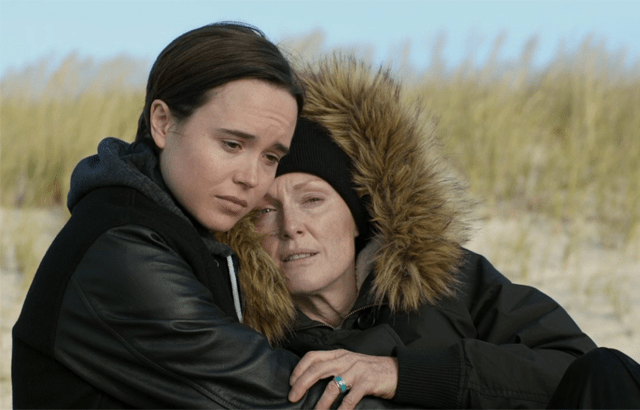
Freeheld is one of the only widely distributed movies in history to feature two queer female characters in the leading roles. And, of course, it’s Ellen Page’s first gay role, and after she came out as a lesbian, too!
In her review, Riese said:
If you’re interested in watching a really solid film with a lesbian couple smack dab at the center of a small story with national implications, I cannot recommend a better place to do so than in a movie theater screening Freeheld. It’s not without lightness, either, or humor in fists, humor at the moments when you most need it (because you were just crying). It’s a real rollercoaster, y’all.
And it’s true! You will cry for two hours. But you know a lesbian will die going into the movie, and you know that death is real (as in real life) and that it was catalyst for some enormous leaps forward on the marriage equality front in The United States. It’s not a stray bullet; Laurel’s death meant something real in the real world.
Carol (2015)
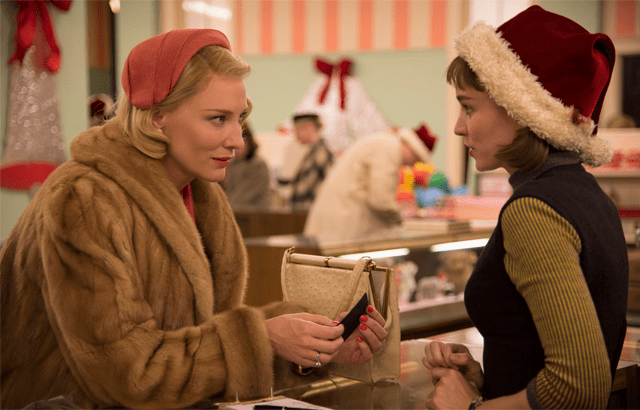
Carol may have gotten shut out of the Oscars and Golden Globes (though it was nominated for dozens of them) but it is still — unequivocally, I think — the best lesbian movie ever made, and one of the most feminist movies ever made. It also doesn’t need the qualifiers. It’s one of the best movies ever made, period. What I wrote in my review is still true:
Carol is the very first piece of queer art I’m glad I didn’t engage with before right now, with all my lived experience tucked in my pocket, and years and years of doing this job under my belt. To grasp the uncommonness of the incomparable Cate Blanchett and Rooney Mara inhabiting every centimeter of these fully realized queer female characters and pinging off of each other like electric pinballs. To understand what it means that Carol arrives in furs like a predator and abandons them before the movie’s end, what it means that Carol is in nothing but red in the first act and that it’s Therese who dons it in the final scenes. To watch them watching each other through windows — endlessly, it seems, this movie is filmed through windows — and to feel it all the way down in my bones when Therese is ready to stop just looking. To appreciate that Haynes knows when to let the film breathe and when to pull the narrative so taut that it seems like your heart will hammer its bloody way right out of your chest. To value the rarity of seeing a lesbian film stitched together with such accomplished precision it makes me wish the word “epic” hadn’t been completely diluted so I could bring the full weight of its meaning to bear on this love story.
And I will never stop believing that it was Carol‘s misandrist heart that caused it to flop with the old white men at the Academy and in the Foreign Press who hand out the hardware.
Bessie (2015)
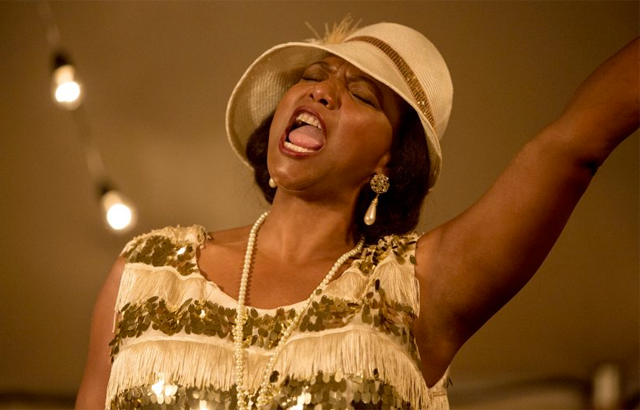
It’s egregious that the only critically acclaimed film featuring a black lesbian/bi character in the last seven years was made for HBO. I mean, don’t get me wrong, HBO is a great platform for quality content, but Bessie deserved even more. It won four Emmys, a Critics’ Choice award, a Screen Actors Guild Award (for Queen Latifah), and a Directors Guild of America Award (for Dee Rees).
From Gabby Rivera’s gorgeous review:
Bessie is bomb, y’all. Super bomb. She stands up for herself and her people even in the face of the damn Klan. The Klan and the moments with rich white people are fucking terrifying. Like hold-my-breath, oh-my-god is Bessie going to die right now terrifying. There are no white saviors in this film, thank the universe. Bessie Smith doesn’t cater to white people or men and as brave as her fight is, it’s equally gut-wrenching; at any moment, the world she fights for could have swallowed her whole and left her to rot. Queen Latifah ever so capably maneuvers Bessie from any sort of static strong-Black-woman archetype and weaves a palpable vulnerability, an ache for love, into her portrayal and it’s glorious.
Bessie is an exceptional film, and Queen Latifah has never been better. If we need more of any of the movies on this list, Bessie is the one.
Pride (2014)
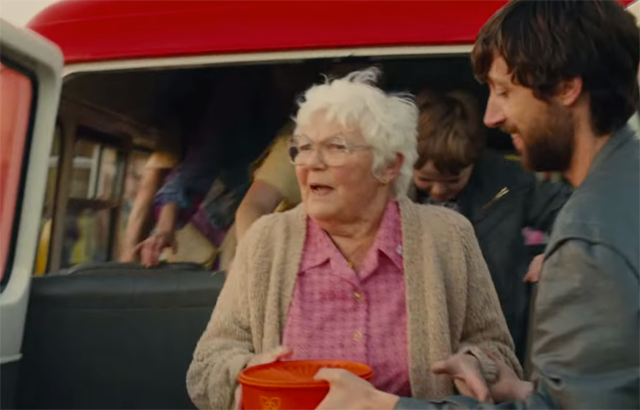
This is the movie that made me cry the most — yes, even more than Freeheld because I stifle my sad cries and roll with my happy ones. It’s the only UK-crafted movie to make the cut because it’s enormous success across the pond propelled it to acclaim here too. It won the Queer Palm at Cannes, two British Independent Film Awards, and a BAFTA.
Kaitlyn’s review really captures what makes this movie so great:
Rather than focusing purely on pride marches or the AIDS crisis or any of the other very real, important issues the early LGBT rights movement faced, this movie centers on a small group of queer activists (Lesbians and Gays Support the Miners) and their support of a Welsh mining community that’s participating in nationwide strikes against shrinking subsidies. They struggle to find a union that will accept their donations, and once they finally do, it’s only by mistake that they’re accepted. Luckily, it turns out that the town is home to some very welcoming, kind people, and they stand up against those who resist; it’s that struggle that propels us through the two-hour film. And that’s a very clever move, because by focusing on the miner strike storyline — which was a huge national story when it happened — the film creates a more authentic environment in which to tell those other stories of the lesbian and gay diaspora.
Pride has a has a lovable British sensibility and feels so authentic you’ll find it hard to believe, at times, that you’re not watching a documentary.
Blue Is the Warmest Color (2013)

Has there ever been a more hotly contested lesbian film than Blue Is the Warmest Color? Queer critics run the spectrum from thinking it’s a piece of voyeuristic garbage to the a piece of revolutionary art. The controversy doesn’t stop with film criticism and lesbian fandom, though. After the film’s release, Léa Seydoux and Adèle Exarchopoulos said the experience of working with director Abdellatif Kechiche was so traumatic they’d never do another movie with him again.
It’s very common in mainstream art criticism to look past a creator’s dubious behavior to appreciate the art he creates. Blue Is the Warmest Color is the first time queer audiences were faced with that dilemma in such a far-reaching way. It unanimously won the Palme d’Or at Cannes, and became the first movie to extend that award to both the director and the actresses. In fact, Seydoux and Exarchopoulos are the only women, ever, besides Jane Campion to receive the Palme d’Or. It was also nominated for a Golden Globe and BAFTA for Best Foreign Language Film. (The studio strategically released the film at a time that made it eligible for the French Oscars, which meant it wasn’t eligible for an American ones.)
Critics who loved Blue praised it for being “raw, honest, powerfully acted” and “deliciously intense.” All of which things are very true, though I’m not sure I would call the intensity “delicious.” It’s so intense it’s almost nauseating!
Blue Is the Warmest Color is probably the most talked-about lesbian film in history. It’s also notable that, unlike the graphic novel on which it was based, no one died in the end.
The Runaways (2010)
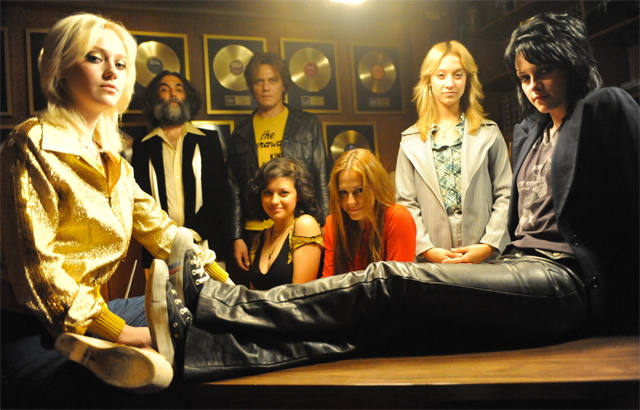
Julie and Brandy (in our box office) reviewed The Runaways for us, so if you allow yourself only one piece of Autostraddle nostalgia today, click through and watch their review for yourself. You won’t be sorry. There are wigs.
No one can say for sure if this is the film that caused Kristen Stewart to finally accept her undefinable sexuality, but probably it is, right? Probably you don’t play Joan Jett and come away straight. Queer women were always going to go all in on this, and not just to see Joan and Cherrie making out on screen. No, this is The Runaways, the gateway to all our all-female rock-and-roll dreams, our dark angel icons! And while the film didn’t get everything right about the band, everyone from Joan and Cherrie to the press praised it for capturing that “despair and frustrated energy” that pervaded life in the mid-70s.
And, like I said, it made KStew gay.
GLAAD Awards Nominees Include OITNB, Tegan & Sara, That Long French Movie About Lesbian Sex, Batwoman
Obviously you already know that this year’s GLAAD Media Award’s Category-to-Watch is Outstanding Blog, because yours dearly/truly has been nominated for that particular honor. But it might surprise you to hear that there are other categories which have also nominated other things for other awards! Let’s discuss!
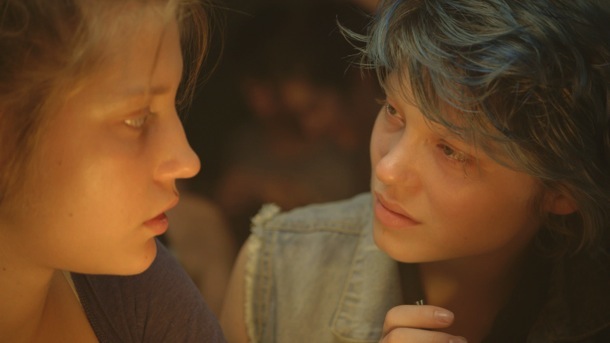
Outstanding Film – Wide Release
This coveted category includes Blue is the Warmest Color, which 75% of the lesbian population loved really hard and Kate disliked really hard and my girlfriend refuses to watch with me because it’s too long. Then there’s Dallas Buyers Club, of which our reviewer Eleven noted “despite its pro-gay attitude, the film fails to break the pattern of transphobic narratives in cinema.” Tween fantasy The Mortal Instruments: City of Bones was one of the worst-reviewed films of the year but there was a gay SHADOWHUNTER in it named Alec! Killing Your Darlings was a Sundance favorite about the early lives of Allen Ginsberg, Lucien Carr, William S. Burroughs and Jack Kerouac, which sounds pretty rad. Philomena is the story of one mother’s 50-year-search for the (spoiler alert: GAY) son she gave up out of wedlock. I hope Blue wins, because lesbians should win everything.
Outstanding Film – Limited Release
“The first thing you should know about Concussion is that Robin Weigert has sex. A lot of sex. With a lot of women, no two of them alike,” wrote Scribegrrrl about this year’s nominee Concussion. If you wanna watch it and see for yourself, it’s streaming on Wolfe-on-Demand. Speaking of Wolfe, Wolfe Releasing has a nominee in this category for Reaching for The Moon, about Elizabeth Bishop’s big trip to Rio to visit her college friend Mary and subsequent affair with “Mary’s bohemian partner, architect Lota de Macedo Soares.” Cute teen movie Geography Club, about a group of LGBTQ teens who form a secret gay club pretend like it’s a Geography Club, has an exciting little cast that includes Alex Newell as an 80% straight/20% gay human being. Out in the Dark is a gay love story between a Palestinian student and an Israeli lawyer. Yossi is an Israeli film about “a closeted gay cardiologist who struggles to find meaning in his life while overcoming the loss of his lover and reconciling his past with his future.”
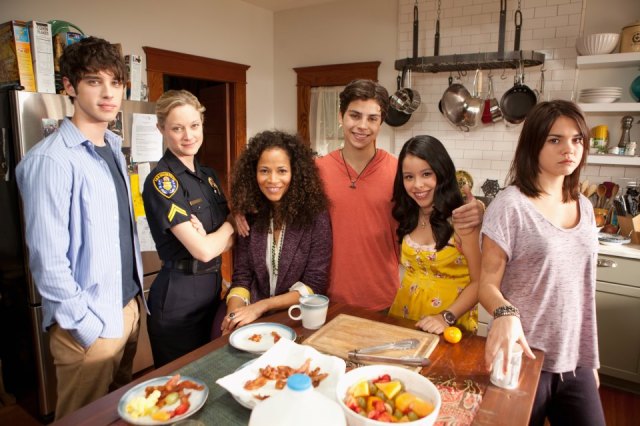
Outstanding Drama Series
This is a great category for the ladies because lesbians are really dramatic. My personal pick, The Fosters, is about two lesbian Moms and their many crafty children. Grey’s Anatomy is in the mix, I presume, because Calizona. I hear they didn’t have a great year. Pretty Little Liars, which fills the strawberries of our minds with the Emily Fields of our hearts and features a group of girls who still haven’t learned not to go to dark mysterious places late at night by themselves, is nominated, and if they win then Emily, Paige, Shauna, Samara, the Ghost of Maya, Ali and Jenna will all have to fight for the trophy and who will survive? Ezra probs. A fantastic Canadian sci-fi show you should be watching, Orphan Black, is also nominated and it features a gay male lead character and also a nerdy lesbian clone in cute glasses. Everybody deserves their own lesbian club! Then we have Shameless, a show I have never seen BUT I’ve seen their most recent preview at least 56 times because it was always on between Homeland and Masters of Sex. I’m pretty sure there aren’t any lesbians on it, though.
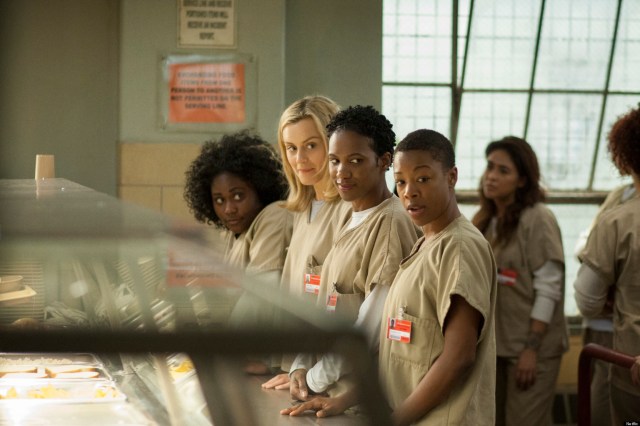
Danielle Brooks as Tasha “Taystee” Jefferson, Taylor Shilling as Piper, Vicky Jeudy as Janae Watson and Samira Wiley as Poussey
Outstanding Comedy Series
Once again, the notorious white water rafting nature show Glee has snagged a nod, ’cause Glee is chock full of LGBTS: Santana and Dani, two lesbians who don’t tongue-kiss enough; Kurt and Blaine, two gay boys who enjoy singing and dancing; and Unique, a black transgender woman seemingly put on the show for the Glee writers to play out their transphobia onscreen, much like Ilene Chaiken once did with Max. GLEE!
Then there’s Brooklyn Nine-Nine, which is breaking stereotypes with its gay police chief, and, obviously, Modern Family, a show featuring a gay couple who constantly undermine each other and bicker all the time!
Kaitlyn had this to say about Pivot’s Please Like Me, which I’ve never heard of: “The short-lived Australian show pretty perfectly captures the uncertainty and frustration of having an okay life and yet not being happy or knowing what to do about it. The main character, Josh, has to take over when all the adults in his life start acting like children, an if nothing else, it’s worth watching just for his accented bickering with his crazy Aunt Peggy.”
Last but not least — because actually it’s “most” — is Orange is the New Black, our favorite show of all time ever. Honestly Orange is the New Black should win everything, including Outstanding Newspaper Article.
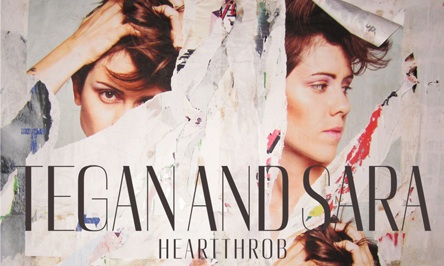
Outstanding Music Artist
Did you know Elton John released an album about diving boards last year? I did not. But I did know that Tegan & Sara released an album, and they’re nominated in this category along with Lady Gaga’s Art Pop, Vampire Weekend’s Modern Vampires and Goldfrapp’s Tales of Us.
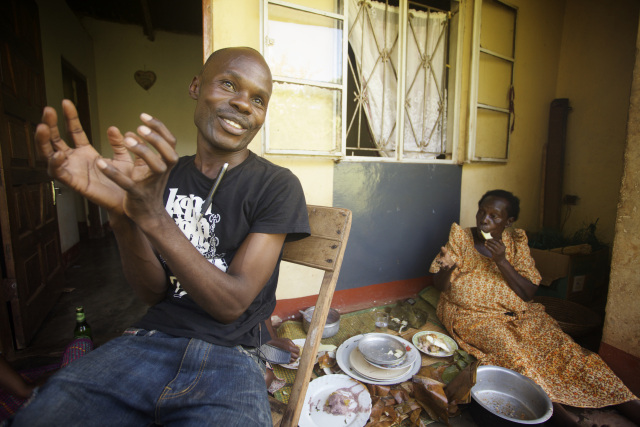
Photography © 2010 Katherine Fairfax Wright via Call Me Kuchu
Outstanding Documentary
Valentine Road is Marta Cunningham’s HBO documentary about the murder of Larry King. The New Black, from Yoruba Richen and Promised Land Films, looks at divisions within the African-American community around the issue of marriage equality. God Loves Uganda explores the American evangelical movement within Uganda and how that has created the dangerous legislated bigotry in the area. In Call Me Kucha, activist David Kato works with retired Anglican Bisohp Christopher Senyonjo to defeat Uganda’s anti-gay bill, but everything is shaken by the brutal murder of David Kato. Bridgeroom tells the story of two young gay men whose relationship is cut short when one man falls off the side of a roof and dies, with the aftermath detailing “how people without the legal protections of marriage can find themselves completely shut out and ostracized.”
Outstanding Reality Program
I am the worst w/r/t Reality Television because I hate all of it! However, Dream School has a transgender character named Alan, who dropped out of high school because of bullying, and he becomes besties with 50 Cent and from what I’ve seen of the show — which also features lesbian finance “guru” Suze Orman — it’s a pretty solid production! Cyndi Lauper: So Unusual follows the life and loves of LGBT ally Cyndi Lauper. “Gospel prodigy turned larger-than-life Bounce Star” Big Freedia’s show, Big Freeida:Queen of Bounce, is Fuse’s most popular original series ever and a great platform for its star who is “on a mission to take New Orleans’ Bounce music from the clubs of Canal Street to the top of the charts and the great arenas of the world.” Small Town Security features a transgender security specialist named Dennis Croft. Also, Project Runway still exists!
Oustanding Comic Book
I brought in our Comics Expert Mey for this one:
It’s good to see so much representation for the queer ladies in this year’s nominees. Although it would be nice if more of the creators were women to go along with the characters. First of all, we’ve got Batwoman, written by W. Haden Blackman, J.H. Williams III and Mark Andreyko from DC Comics. This comic is probably the frontrunner (at least among comic fans) for its groundbreaking role as the first DC title headlined by a queer woman and it’s gorgeous art, unique style and brilliant writing. Plus, it’s one of the few DC titles that hasn’t been completely ruined by the New52 relaunch (that is until the creative team left because the title character wasn’t allowed to marry her fiance). Still, this was a great year for Batwoman, one that featured her teaming up with Wonder Woman, asking her girlfriend to marry her, and her title continuing to have dark and intense writing and some of the most unique and groundbreaking art in all of mainstream comics.
Life With Archie, by Paul Kupperberg, is probably the other title most people will be most familiar with. Even though he’s definitely not nearly the cultural icon he used to be, people still look to Archie and see a representation of wholesome American values, so that’s what makes it so great that not only did they introduce a gay character, Kevin Keller, but the comic has continued to highlight and support him, even throwing things in the face of protests from the likes of One Million Moms.
Husbands is an alternate universe comic book version of a sitcom that is billed as “the world’s first marriage equality comedy” and is written by Jane Espenson and Brad Bell.
My two favorites of the bunch are these next two. First, there’s Marvel’s Fearless Defenders, written by Cullen Bunn. This was one of the few all-female superhero teams at either of the big two comic companies. Featuring characters like Valkyrie, Misty Knight, Dani Moonstar and Dr. Annabelle Riggs. Riggs was one of Marvel’s few lesbian characters, and they unfortunately killed her off pretty early on. They redeemed themselves a little by bringing her back from the dead (only to share a body with Valkyrie), but the death still rubbed a lot of readers the wrong way. While the art was sometimes a little too “Escher Girl,” it was great seeing a comic book about a team of badass lady superheroes kicking butt and having a good time together. Even the supporting cast was filled with other ladies, ranging from Hippolyta, the queen of the Amazons to Clea the sorceress and Elsa Bloodstone.
Now, the final nominee is Young Avengers, by Kieron Gillen and Jamie McKelvie. Another Marvel title, this book takes a bunch of the young superheroes of the Marvel world (Hulking, Wiccan, Hawkeye, Prodigy, Kid Loki, Noh-Varr and Miss America Chavez being the main group) and sends them off on adventures as a teenage version of Marvel’s greatest superhero group. This book was revolutionary in the way it portrayed young superheroes. I don’t think I’ve ever seen a superhero comic that seemed to capture what it’s like to be a teenager this well since the initial run of Runaways. The writing was funny and exciting and filled with great references, the art was fresh, cool and included page layouts that you couldn’t find anywhere else. Plus, by the end of the series, literally the entire team was revealed to be queer except for one character who many fans are still holding out hope for. While some of the storylines were definitely driven by the character’s relationships (and therefore their queerness), this was not an explicitly queer title. Everyone just turned out to be gay. It was a mainstream comic that happened to feature 90% queer characters. Instead of having one or two token queers on the team, it took a more realistic approach, showing a group of queer people sticking together. Seriously, how many queer people living in New York hang out with an exclusively straight crowd? Not only did this book feature a huge group of unique and fully fleshed out queer characters, but it also featured several queer people of color. This title was a breath of fresh air and never stopped being fun to read or relevant.
Media Journalism Awards
There is a lot happening in this area this year! We’ve linked up these bits so you can watch, read and learn for yourself and decide who should be declared Queen of the Prom.
Outstanding TV Journalism – Newsmagazine
“Chris to Kristin: A Navy Seal’s Secret” Anderson Cooper 360 – CNN
“India’s Third Gender”The Stream -Al Jazeera America
“The Rebounder: The Kenneth Faried Story” E:60 – ESPN
“Transgender at 11: Listening to Jazz” 20/20 – ABC
“The Welcoming Movement” To the Contrary – PBS
Outstanding TV Journalism Segment
“Gay Rights at Work” MSNBC Live with Thomas Roberts – MSNBC
“Portman Reverses Position on Gay Marriage” Starting Point – CNN
“Pride & Prejudice” Melissa Harris-Perry – MSNBC
“Scouts Dishonor” The Last Word with Lawrence O’Donnell – MSNBC
“Wild Blue Yonder: Scott Hines” The Rachel Maddow Show – MSNBC
Outstanding Newspaper Article
“Boy or Girl? Gender a New Challenge for Schools” by Martha Irvine – Associated Press
“Gay Ex-mayor Who Fled U.S. Awaits Immigration Change” by Jeremy Roebuck – San Antonio Express-News [San Antonio, Texas]
“LGBTQ in the Capital” (series) by Melissa Griffiths – Juneau Empire [Juneau, Alaska]
“Poor Black and Hispanic Men Are the Face of H.I.V.” by Donald G. McNeil, Jr. – The New York Times
“Why Bisexuals Stay in the Closet” by Emily Alpert – Los Angeles Times
Outstanding Magazine Article
“The Hidden War Against Gay Teens” by Alex Morris – Rolling Stone
“Owning the Middle” by Kate Fagan – ESPN The Magazine
“The Perfect Wife” by Ariel Levy -The New Yorker
“What’s Wrong With Exxon?” by Antonia Juhasz – The Advocate
“Why Gay and Lesbian Couples Pay More” by Carolyn M. Brown – Black Enterprise
Outstanding Digital Journalism Article
“How Fallon Fox Became the First Known Transgender Athlete in MMA” by Loretta Hunt – SportsIllustrated.CNN.com
“How One Lawyer Turned the Idea of Marriage Equality into Reality” by Chris Geidner – Buzzfeed.com
“Prime Timers: Spotlight on LGBT Seniors” (series) – Advocate.com
“Repression and Gay Rights in Russia” by Sean Guillory – TheNation.com
“Sex, Lies and HIV: When What You Don’t Tell Your Partner is a Crime” by Sergio Hernandez – Buzzfeed.com / ProPublica.org
Outstanding Digital Journalism – Multimedia
“Bisexuals Get Their Turn In The White House” by Alyona Minkovski – Live.HuffingtonPost.com
“Coming Out Kicking” by Cyd Zeigler – Outsports.com
“Remixing the Trans and Hip Hop Conversation” by Marc Lamont Hill – Live.HuffingtonPost.com
“To Get Married, They Left Ohio” by Julie Zimmerman on behalf of the Cincinnati Enquirer Editorial Board – Cincinnati.Com
“We Are Here: LGBTI in Uganda” by Sunnivie Brydum, D. David Robinson – Advocate.com
Outstanding Magazine Overall Coverage
And, of course, once more for good measure …
Outstanding Blog
Holy Bullies and Headless Monsters

You can check out all the nominees in all of the categories over at Glaad.
Top 10 Queer and Feminist Books of 2013
2013 has been truly awesome for new queer and/or feminist things to read. Here are some of the best ones.
The Top 10 Queer/Feminist Books of 2013
10. How Poetry Saved My Life, by Amber Dawn
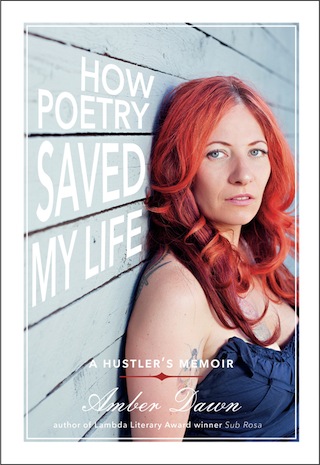
Amber Dawn combines memoir and poetry into something that is both at once as she discusses her experiences as a writer, sex worker, survivor and queer-identified person.
In her interview with Ali, Dawn says:
“Many memoirs cover a chronological time frame—travelling from the author’s “inciting moment, through a sort of character or personal arch, to an ending resolution. I think this popular memoir formula is much too tidy to capture most of our lives, especially if our lives are under-represented in the mainstream. Plus, I didn’t have the emotional strength to write a chronological memoir about sex work and survivorship. Poetry offered me a language of beauty and dynamism to write out my more vulnerable ideas and experiences. I’ve always felt comfort in reading and writing poetry. Poetry is the closest thing I have to a spirituality.”
9. The Summer We Got Free, by Mia McKenzie
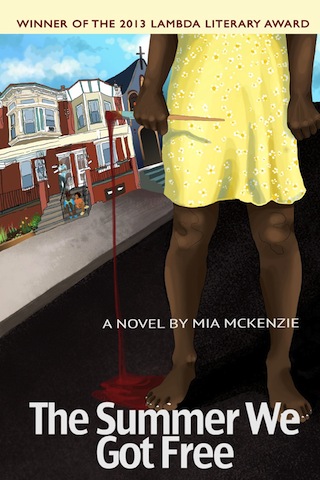
The Summer We Got Free is a fearless, semi-magical-realist queer coming-of-age story that also won the 2013 Lambda Literary Award for debut fiction. And Moya Bailey liked it.
In a review at Lambda Literary, Dawn Robinson writes:
“I will not give you all of the salient details of this layered, complex, and absorbing novel in this brief review—no spoilers here. Still, I need to ask you a few clarifying questions. Are you interested in a novel that is simultaneously critical social commentary, ghost story, murder mystery, and queer love story? If you were interested in such a novel, would it matter to you that the craft of the writing is deceptively plain, and in that simplicity, achingly poignant, laser-like in its facility and effect? Me too. I love that.
Finally, if you found out that the author was a fiercely brilliant black queer woman, who layers on discovery, insularity and secrets with a deft touch, would you be queuing up to get a copy of this book? Thought so.”
8. Nevada, by Imogen Binnie
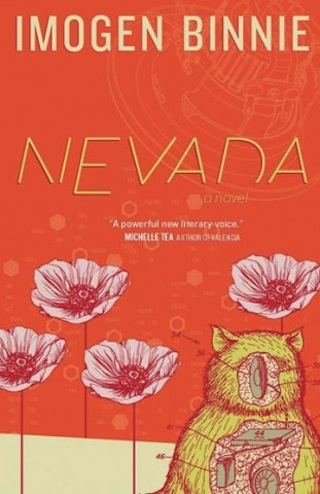
Nevada is about what happens when you work at a used bookstore and love your bike more than your girlfriend and drink maybe too much and take drugs but inject only estrogen and break up with your girlfriend and travel across the country.
In an interview with Dan Fishback on Emily Books, Binnie says:
“But with Nevada specifically I was thinking a lot about what kinds of stories we are told and therefore get to tell about trans women and how they almost never have much to do with the lived experiences of, like, myself, or most of my friends. So this project, for better or worse, was just to tell a different story. And also, to write a book I wish I could read. So while writing the book wasn’t for an audience in a specific way, I wrote it with an awareness of (and anger at) the boring tropes we see in trans narratives over and over.”
7. Bi: Notes for a Bisexual Revolution, by Shiri Eisner
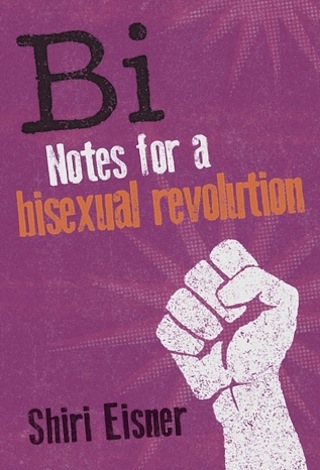
Eisner describes Bi as her “attempt to create a radical bisexual politics, and it is deeply informed by intersectionality, feminism, trans politics and race politics – not in the least because I myself am a trans* person of color.” She addresses bisexual politics through multiple facets and is informed by feminist, trans* and queer politics, theory and activism.
A.J. Walkley calls it a “definite must-read” and writes:
“The research Eisner has done for this book is clear from the beginning and the result is an incredible historical review of the bisexual movement from a whole host of perspectives and views, as well as clear ideas for revolutionizing it from here on out. With chapters on bisexuality, monosexism and biphobia, privilege, feminism, women and men, trans*, radicalization and what Eisner calls the “GGGG movement,” or the Gay-Gay-Gay-Gay movement, readers are exposed to the major issues that have impacted bisexuals over the years and those that are affecting us today.”
6. One Hundred Apocalypses and Other Apocalypses, by Lucy Corin
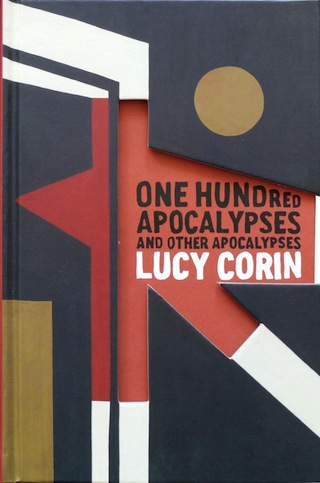
Lucy Corin’s experimental collection of 100 short stories about the end of the world has received high praise from the Rumpus and the LA Review of Books, which calls it “strange, transportive, and challenging,” “ageless,” and draws flattering comparisons with George Saunders.
In an interview with the Rumpus, Corin says:
“I decided I wanted to write an apocalyptic narrative, but the more I thought of it, it seemed bizarre and untenable to me to pick one, so I just didn’t.
I was interested in beginning and ending something as quickly as possible, as many times as possible, as a way of getting at a cultural fantasy life that has to do with the apocalyptic. Nobody can live in this culture and not realize that people really love this shit. We just love it. And so I started writing one after another and investigating it myself and talking to people about their own apocalyptic fantasy lives.”
5. Excluded: Making Feminist and Queer Movements More Inclusive, by Julia Serano

In Excluded, Julia Serano (author of Whipping Girl) discusses how queer and feminist movements challenge sexism but also police gender and sexuality, and what to do about that.
In an interview with Persephone Magazine, Serano says:
“Obviously, all these forms of sexism and marginalization are different, and I am not trying to conflate them or imply that they are all the same. But in studying them, it seems clear that there are parallels between all of them — in the way that they are enforced, and in the way that the marginalized group tends to react to their circumstance. Rather than merely petition for the inclusion of each excluded group on a one-by-one basis (as I did in Whipping Girl, and as many others before me have done), I wanted to try to get at the root of why we tend to create double standards and hierarchies, and how we can learn to recognize and challenge them in a more general sense. And I wanted to offer possible solutions that will help to reduce exclusion and marginalization in all cases, whether in the straight-male-centric mainstream or within our own queer and feminist communities and movements.”
4. Blue is the Warmest Color, by Julie Maroh
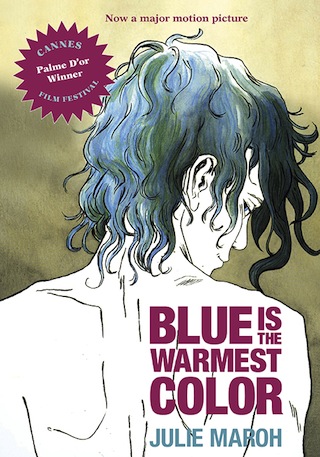
Everyone’s been talking about the film that won the Palme d’Or at the 2013 Cannes Film Festival for months, and it’s been getting a lot of criticism for its rather extended lesbian sex scene. But the graphic novel the film is based on is sweet and lovely and significantly less male gazey.
In a review at Slate, June Thomas writes:
“Maroh, who was just 19 when she started the comic, manages to convey the excitement, terror, and obsession of young love—and to show how wildly teenagers swing from one extreme emotion to the next. The graphic novel also contains some stirring sex scenes. […]
Ultimately, Blue Is the Warmest Color is a sad story about loss and heartbreak, but while Emma and Clementine’s love lasts, it’s exhilarating and sustaining. In the scene reproduced here, Emma tells the infatuated Clementine about her coming-out process and her relationship with her girlfriend, Sabine.”
3. My Education, by Susan Choi
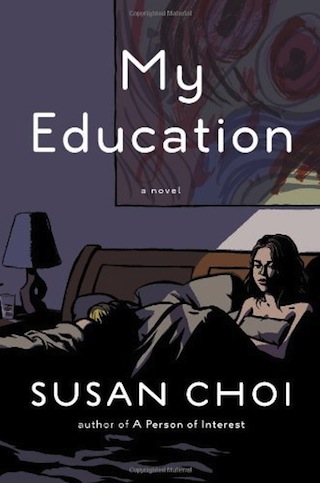
The latest novel from Pulitzer Prize finalist Susan Choi is about a grad student who begins an affair with her professor’s wife, and who then reflects on the affair 15 years later. In the New York Times, Emily Cooke calls it “elegantly written,” and writes:
“Choi has taken seriously the sexual love between two women who see themselves as straight. This choice of subject matter is an exciting one, for if a number of the great novels of the past century have been stories of gay love, no really adequate literature of bisexuality exists. Regina does not concern herself with the terms ‘lesbian’ or ‘bisexual,’ and she is nonchalant about the sex of her new lover. […] In love of great intensity and depth the specificity of the beloved can overwhelm any category he or she belongs to — and Regina swears that her feeling for Martha is ‘so unto itself it could not refer outward, to other affairs between women or even between human beings.'”
2. Hild, by Nicola Griffith
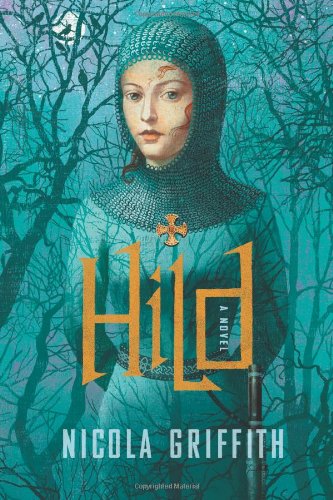
Set in violent seventh-century Britain, Hild tells the story of the pre-sainthood St. Hilda of Whitby, a girl who establishes herself as the seer to a ruthless king who finds her indispensable — until he doesn’t. It’s impossible not to love Nicola Griffith — she’s also the author of the feminist sci-fi novel Ammonite, the suspense-thriller-lesbian-romance The Blue Place, and lovely defences of why good sex in literature is important and Hild’s (bi)sexuality.
In an interview with herself at the Nervous Breakdown, Griffith says:
“As soon as I picked up her story–she was working out the weave of seventh-century British politics, tracing influences to their source–I thought, This is where I belong. […]
This story is epic in many ways–wars, dynasties, revenge, friendship, religious power struggle, ethnogenesis, sex, risk, joy–but in others it’s not. There’s no Meanwhile, a thousand leagues away in the point-of-view of a character you’d forgotten existed…, for example. Hild is in every single scene.”
1. The Feminist Porn Book, edited by Tristan Taormino
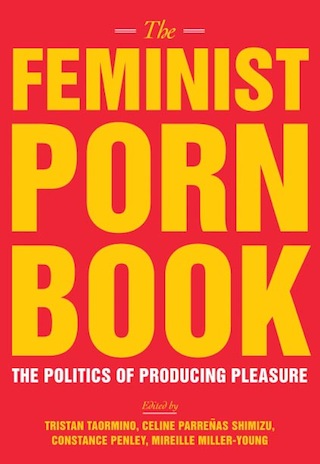
The Feminist Porn Book already feels like it’s been around for years just because it should have been — it fills a hole in contemporary feminist writing so big that I almost feel bad making a joke about filing holes.
The book features feminists from the porn industry and academia, including Susie Bright, Candida Royalle, Betty Dodson, Nina Hartley, Dylan Ryan, Jiz Lee, April Flores and more, talking about where feminist porn has been and where it might go. In an interview with Salon, Taormino says:
“One of the things we’re responding to is that there’s this notion that certainly is propagated by anti-porn feminists and other people, which is that there is one thing called porn with a capital ‘P.’ And it’s monolithic and we can qualify it in all these different ways and say this is what it looks like and this is what it does. As Constance says, ‘That’s just not true.’ What there is is a whole series of pornographies with a lowercase ‘p,’ and that’s what we have to look at and investigate. There is no one thing, and she even challenges the notion that there is a clear division between mainstream porn and independent porn, or mainstream porn and feminist porn, because there are feminists working within the mainstream porn industry and then there are feminists working independently, and there are non-feminists working independently, and vice versa. They’re all over the place.”
If your favorite book isn’t included here and you’ve got feelings about that, please comment in all-caps using as much punctuation and self-righteous indignation as possible! Or just tell me about what I should read next.
Autostraddle Book Club #7: We’re Reading “Blue Is The Warmest Color”
Originally I was going to write a review for Blue Is The Warmest Color, but after the really intense response to our giveaway post I emailed Laneia. “How about,” I said, “I make this here graphic novel a book club.” Because obviously, all of y’all really want to read this. And I do too. And thus it was decided. We’re reading Blue Is The Warmest Color.
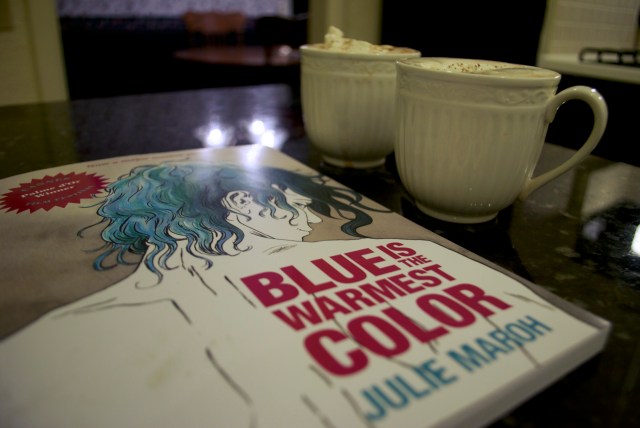
Blue Is the Warmest Color, by Julie Maroh, was originally conceived when Maroh was 15 (according to this author talk right here) and published en français in March 2010. Its title, Le bleu est une couleur chaude, was re-worked in English translation to Blue Angel. But it’s back as Blue is the Warmest Color after the film adaption (winner of the Cannes Palme d’Or and reviewed here on Autostraddle) used that title. This book chronicles the life of Clementine, an adolescent with a lot of sexuality questions, as she meets Emma, a bright blue-haired queer woman who answers some of those questions and brings up even more. A coming of age story, a love story and – well – a couple other stories mixed in there, too.
So here’s the deal with the Autostraddle Book Club: let’s all take one month to buy the book and read it. Because it’s a graphic novel, actually getting through it doesn’t take a ton of time. BUT! Because it’s a graphic novel, there’s twice the content to discuss in December: we need to talk story and art.
And! Because I’m the one doing the book club and I also write one of the liquor-related columns, I have a bit of an added element. Queermos, I present to you:
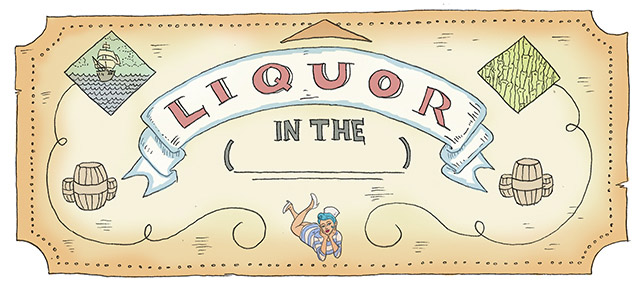
Liquor In The Book Club: The Warmest Drink
Sipping cocktails and reading are two of my favorite things, and I love doing them together. So I invented a drink to reflect my experience reading this book. I’m not going to tell you exactly why – that’s one of my discussion questions for a month from now – but I am going to give you the recipe so you can enjoy sipping on this while metaphorically rolling around in this wonderful art.
The Warmest Drink has two components – the drink itself, and a Vanilla-Rum whipped cream. You should start with the whipped cream. It’s an adaption of Mom’s Whipped Cream (originally posted here). Just to warn you, this whipped cream is legitimately my greatest accomplishment to date. So.

Ingredients for Mom’s Whipped Cream, Vanilla-Rum Style:
+ 1 cup heavy cream
+ 1 tablespoon sugar
+ 1 teaspoon vanilla
+ 1 teaspoon dark spiced rum (I’m using The Kraken)
Directions for the whipped cream:
In a medium or large mixing bowl, combine the cream, sugar, vanilla and rum. And do be aware – you don’t have to be one hundred percent exact on the rum. I overspilled a little, which was a really solid decision. Grab an electric mixer unless you want your arm to turn into a spaghetti noodle and whip the mixture until peaks form. Cover your brand new Vanilla-Rum Whipped Cream and stick it in the fridge. Lick the sprongy things on the mixer and move onto the drink part of The Warmest Drink.
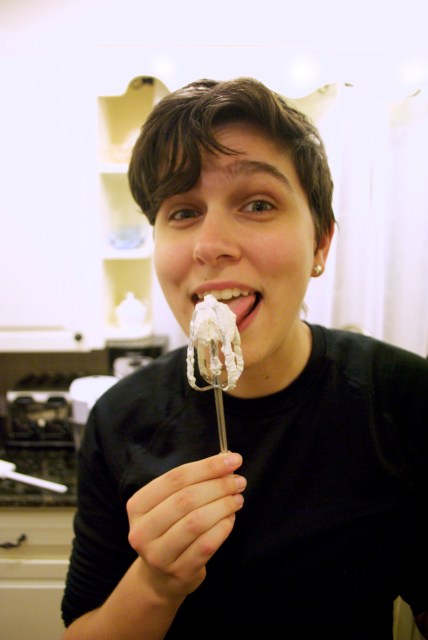
My girlfriend made me put this in here.
Ingredients For the Warmest Drink:
+ 1/2 cup sugar
+ 1/4 cup cocoa
+ 1 dash of salt
+ 1/3 cup hot water
+ 4 cups milk (I’m using 2%)
+ 3/4 teaspoon vanilla extract
+ 1 oz dark spiced rum per person drinking (again, using The Kraken because it is a perfect spiced rum)
+ 1 dash Bitterman’s Hellfire bitters (that’s Habanero Shrub, y’all)
+ ground nutmeg to garnish
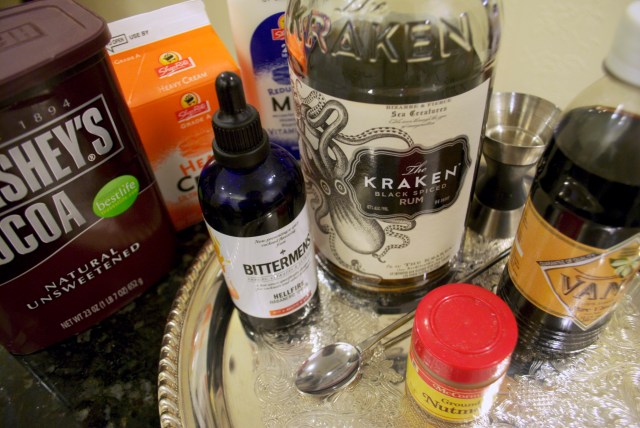
Directions for The Warmest Drink:
If you’re keeping score, you’ll notice I got the Hot Chocolate recipe from the side of the Hershey’s Cocoa box. It’s called Favorite Hot Chocolate, but I’m about to make it more favorite by adding rum and hellfire.
Combine the cocoa, sugar and salt in a sauce pan.
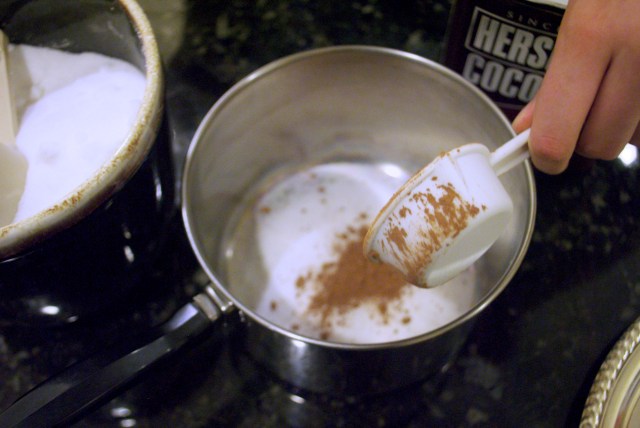
If you’re wondering what a dash of salt looks like in my recipes, this is that dash of salt.

Add the 1/3 cup of water and stir until there are no more clumps. Then chuck that mixture on the stove, medium heat. Bring it to a boil, then stir at a boil for about two minutes.

Then add the milk. Reduce the heat a bit because you want to make the hot chocolate hot, but you really don’t want to boil it. Because then the milk will be all scalded and it will taste weird. You’re also going to want to reduce the heat a bit because you’re going to want to step away and prepare the alcohol part of this drink.
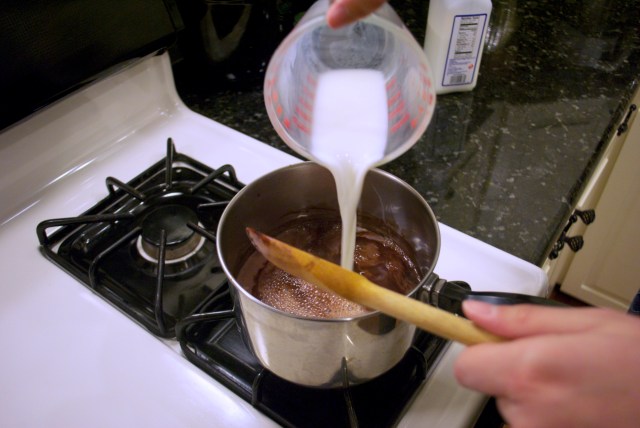
In your desired serving mugs (we’re using smaller mugs because I like boozey drinks) use your jigger to measure out 1 oz of Kraken into each.
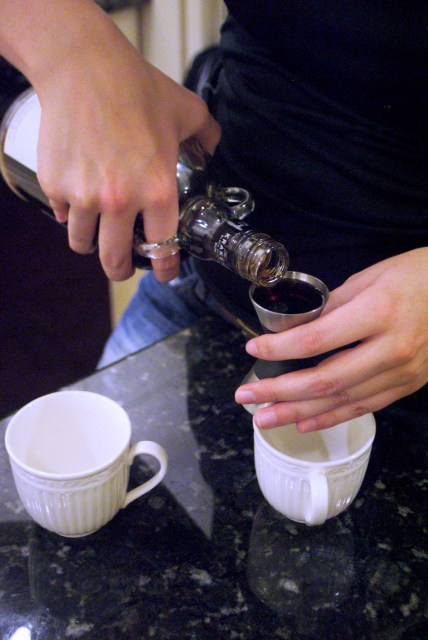
Then grab your Bittermans. I love Bittermans because each bottle comes with a dropper. Now a dash of Hellfire is about a quarter-full dropper or 15 drops from said dropper. It looks like this –
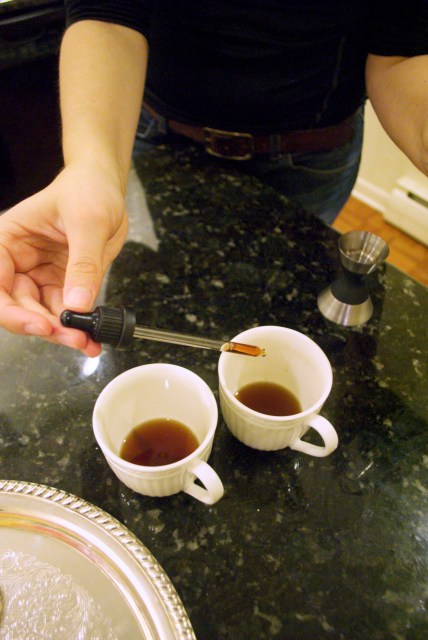
When your hot chocolate is hot enough, remove it from the heat and add the 3/4 teaspoon vanilla to the pot. Top your rum-and-hellfire-filled mugs with hot chocolate. Grab your bar spoon and stir everything together. Remember that whipped cream from the fridge? Put a nice big dollop on top of your Warmest Drink. Garnish with a sprinkle of nutmeg.

Options for this drink: when you’re making your hot chocolate, throw two cinnamon sticks in the bottom of the pot. Or! Add a cinnamon stick to the garnish.
Drink, read and be merry! And remember, don’t drink so much of this that you can’t form cohesive opinions regarding Blue Is The Warmest Color by Julie Maroh! Grab your copy in French or in English and let’s get cracking.
Also.Also.Also: Brittney Griner’s Makeup Class and Other Stories We Missed This Week
Hello, pumpkin pie slices with ice cream! I had a hard day. Is it Christmas yet?
https://www.youtube.com/watch?v=XqWig2WARb0
While I’m hanging my stocking, let’s talk about the stories we missed this week!
We Heart the OUT 100
From Laverne Cox to Brittney Griner, there’s no denying that the OUT 100 is diverse, beautiful, and altogether amazing.
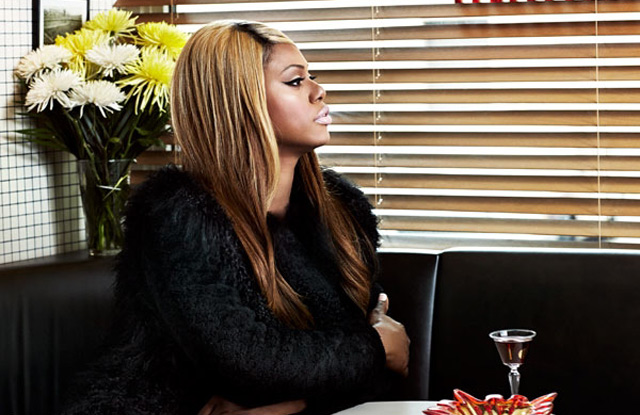
State-By-State, Nation-by-Nation: Queer Battlegrounds
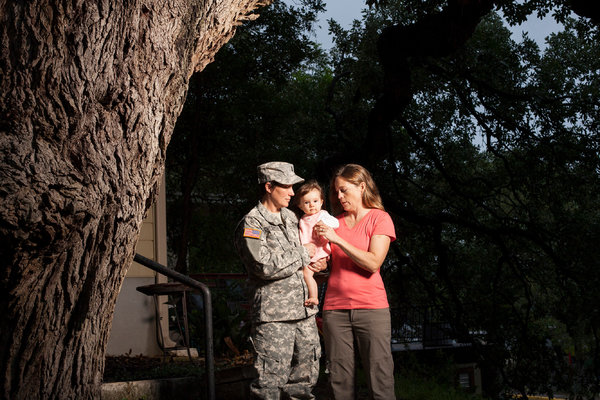
+ Hell is other people. Especially when the other person is your spouse that you’d really like a divorce from but it isn’t legally possible to obtain.
+ TIME breaks down the next stops on the Crazy Train of Love, AKA GAY MARRIAGE AND THE MOVEMENT FOR QUEER ASSIMILATION.
“The more people are winning, the more people are stepping up and wanting to become involved and move forward after,” says Evan Wolfson, founder and president of Freedom to Marry. “The more we make it real — the more places gay people share in the freedom to marry — the more people see with their own eyes families helped and no one hurt.”
+ The new Mayor of Seattle is the new normal: totally gay.
+ Zambia’s first lady is too fabulous to be homophobic.

Being gay is considered a crime in Zambia. In fact, two men are currently being prosecuted for engaging in consensual sex. Another is on trial for discussing gay people and HIV on television. According to The New Civil Rights Movement, the country’s tabloids have recently taken to outing men rumored to be gay, who then face harassment in their neighborhoods.
At the UNAIDS reception, Dr. Kaseba-Sata stated, “Silence around issues of men who have sex with men should be stopped. And no one should be discriminated against on the basis of their sexual orientation.”
She then told the audience that in matters of public health issues like HIV, the gay community has the support of her husband, President Michael Sata.
Lesbians React to “Blue Is The Warmest Color”
Welp.
You Should Go, You Should Give
+ AIRSPRAY, Friday, November 22:
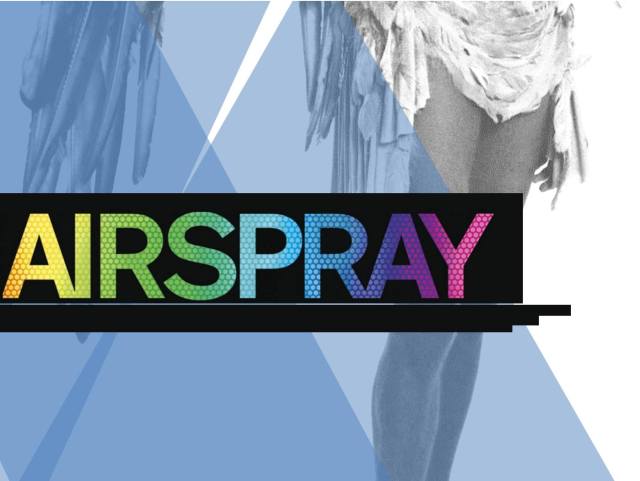
AIRSPRAY: Worcester is a queer community group that will bring LGBTQ cultural events to Worcester catering to the alternatively open-minded and inspired! Connect, dance, and share in the love for music, art and community!
Our first event is a high energy queer dance party! Come early, have some hookah, stay late and dance the night away!
+ Support Sister Spit 2014, because I MEAN COME ON.

Sister Spit has come a long way from the tours of the 90s, when sleeping on a stranger’s floor was the norm and writers were paid $80 for a month of grueling, non-stop work. Nowadays we rent our vehicles to be sure they are dependable – in the 90s, Sister Spit vans were famous for catching fire in Nevada or outright dying in Mississippi. Now, We stay in hotel rooms, making the rigors of touring a bit easier on the crew. And we make a point to pay the writers for their work on the road and time away from their jobs.
Because Sister Spit makes a point to travel not only to the big cities but also seeks smaller, underserved queer populations, Sister Spit is able to provide audiences hungry for LGBTQ, feminist, underground voices with a slew of new writers to read and watch out for each year. By pairing up with local writers in many of these towns, local writers get to be part of a really big show, and Sister Spit gets exposed to even more new voices to work with in the future.
We are asking for community support to help this tour be as successful and far-reaching as possible! By contributing to Sister Spit, you make it possible for us to travel into cities and towns that might not be able to fund the full cost to put up our show. You make it possible for us to pay writers working their butts off to support their art. You help sustain the work it takes to get the show on the road – work that begins nine months before we roll into town.
+ WILDCATS: A group of cheerleaders deal with High School life in this dramedy about standing up for what you believe in, keeping up appearances, and the complexities of farting in a tight uniform. As Allison struggles with opposing the sexist traditions of her school (and what that may or may not suggest about her sexuality) she dances, dreams, and falls her way to some clarity.
F*ck Transphobia
California’s “bathroom bill” is bringing out the drama queen in every bigot.
“It kinda makes me nervous… if I run into… him,” stammers a faceless female teen on a YouTube video that has enraged thousands of viewers.
What’s got her so on edge? It’s not threats of stalking. It’s a transgender girl using the bathroom at a public school…
The video is part of Pacific Justice Institute’s attempt to take action against the so-called “bathroom bill,” a new California law designed to help curb transphobic bullying and harassment by requiring schools to respect a student’s preferred gender identity. The law, which passed in August, allows transgender teens to participate in crossgender activities at public schools, including using bathrooms and showers that correspond to their identified gender.
Michelle Tea Got Married
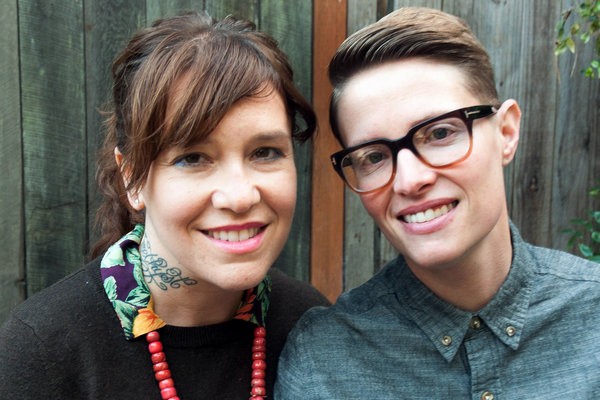
Brittney Griner Hates Makeup, The Patriarchy
When it comes to gender-bending, Brittney Griner is simply the best (and possibly the hottest). And when it comes to WNBA-sponsored makeup classes, she’s pretty clear that she “don’t need that shit.”

Photo via Getty Images
Her outfit for her imminent television appearance was settled on a while ago: a blue-and-white seersucker suit with one of her signature bow ties. But backstage at Conan, she’s addressing another wardrobe concern: what to wear to the ESPYs, ESPN’s annual awards show. The event is three days away, and she needs something to wear with the gorgeous black suit that her stylist, Kellen Richards—who’s also Ellen DeGeneres’ fashion adviser—had custom made for her. “With Ellen, we choose women’s clothes and add menswear touches,” says Richards’ assistant, when asked to compare dressing the two women. “With Brittney, it’s all men’s. And it’s edgier.” (The last time she wore a dress, Griner tells me, was at her mother’s request, for her high school graduation. Never again.)
Griner quickly gravitates to a burgundy sleeveless T-shirt by Robert Geller and a black Saint Laurent sweatshirt top with cutoff sleeves and a narrow silver chain sewn across the yoke. Her agent, Lindsay Kagawa Colas, pulls out a Lanvin sleeveless tee with mesh sides as a racier alternative. “Would you like this with no shirt underneath, with nipples out?” she asks matter-of-factly.
“That would be sexy,” Griner replies, grinning, “but I don’t think I’m ready for that.”
Is This What Makes Us Girls?
Girls who identify as LGBTQ are at a higher risk for substance abuse and behavioral problems.
Queers Getting Schooled
+ Amanda Aceveda claims she was expelled from Preston High School because she’s gay. And she’s not pleased about it.
+ Megan Lent almost joined a queer sorority. If you care about it, that makes you and Vice probably, which I always liked ’til I found out it was owned by that total douchebag dude.
+ Skirts for Sasha day will melt your heart.
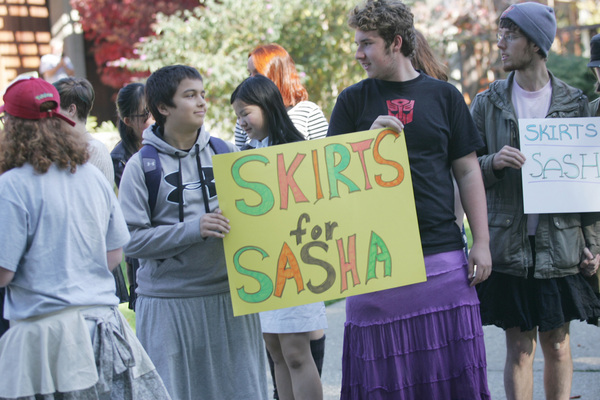
Until two years ago, Luke “Sasha” Fleischman was a shy teen, a loner with odd hobbies and a bright mind, but far from a civil rights activist.
But between Fleischman’s freshman and senior year something changed: Fleischman decided to identify as agender or “nonbinary” gender, neither male nor female. Sasha asked to be referred to by the pronouns “they,” “them,” and “their.”
Family members say that very personal decision helped the teen blossom. But police believe it also led another teenager to light Fleischman’s skirt on fire as the student slept on a local bus, causing severe injuries that could take months to heal.
Since the incident, public support for the injured 18-year-old has been overwhelming, with more than $20,000 raised to help with medical expenses and civil rights leaders expressing outrage about the case. And understanding seems to be growing about the issues of gender identity that Fleischman hoped to call attention to.
On Friday, about half the 100 students at Maybeck High School in Berkeley, where Fleischman attended, wore skirts for Skirts for Sasha Day and carried signs reading, “Get well, Sasha, we miss you.”
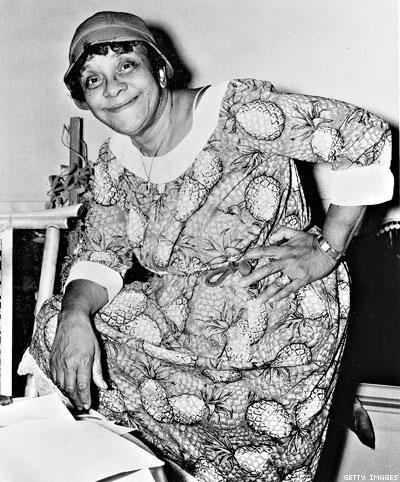 It’s Diversity, Stupid!
It’s Diversity, Stupid!
+ Kerry Washington’s performance on SNL wasn’t enough to fix their big diversity problem. (Salon also explores the experience of auditioning for SNL and almost making it to mecca.)
+ Moms Mabley, the first female comic, was a lesbian. Whoopi said so.
+ The Swedes love gender diversity so much that they’re structuring their film ratings around The Bechdel Test.
Blue Is The Warmest Color: The Male Gaze Reigns Supreme
The top Google search related to director Abdellatif Kechiche’s Blue is the Warmest Color is “Blue is the Warmest Color Sex.” The film’s sex scenes earned it an NC-17 rating in the United States, and video upload sites are now ripe with compilations of the film’s most graphic moments, easier to consume for those whose interest in the film does not include the plot. Maybe it is telling that lesbian movies are usually a Herculean task to procure in their full form, but all too easy to find as prolifically uploaded sex scene super-cuts. It doesn’t take an art history major to tell you about the history of female bodies being objectified and commodified, but if you’re looking for a primer in all the ways that modern media is still failing queers, this film is a good start.
I watched Blue with as blank a slate as I could muster. Of course I had already heard the extensive buzz, partly because I am obsessed with queer narratives in any form, partly because my social media network fits the exact niche that would want to inject all kinds of meaning into a ten minute lesbian sex scene. I had heard the film described over and over again as an experience, one I would come away from with a sense of emotional and psychological exhaustion. I was ready to be moved by something groundbreaking. You can only imagine my disappointment.
![Blue_IWC_Poster_lowt[1]](https://autostraddle-develop.go-vip.net/wp-content/uploads/2013/11/Blue_IWC_Poster_lowt1.jpg?resize=432%2C640)
I am sad to report that I was underwhelmed and uncomfortable, and all too familiar with the tropes at play, none of them creatively handled. At a bloated 2 hours and 53 minutes, one wonders if there were any limitations placed on Kechiche’s vision, and if the film might have improved had someone taken him aside at some point and given him a lesson in the more harmful ways that one can portray a queer person. Or maybe, as Julie Maroh, the author of the graphic novel upon which the film was based, has lamented, the film ultimately suffered from a lack of queer advisory. “It appears to me that this was what was missing on the set: lesbians.”
Adèle is a high school junior newly arrived in her teenage sexuality. Her single encounter with a teenage boy is a sex scene that would be graphic to many American viewers, and yet we are meant to understand from her expressions that she is disinterested, distant, even bored. So this is tame, we think. The passion is to come. And thus we encounter one of many tropes of the lesbian film: The obligatory sex scene in which the character who will later find homosexual love must first dabble in heterosexual intercourse, where we get to witness their boredom, their awkwardness, the obviousness of their discomfort in this event. You’ve seen it many times before. The scene is meant to stand in contrast to the later sexual encounters with Emma, and yet this seems the least rehearsed of those scenes, the least choreographed and mechanical and voyeuristic.
And why wouldn’t it be? The vision of this film comes from a straight male director whose uncomfortable consumption of the actresses’ bodies is hardly subtle. Heterosexual intercourse would be the easiest for the male gaze responsible for the film to portray and naturalize. In Kechiche’s film, heterosexual intercourse doesn’t occupy the same lofty pedestal of lesbian intercourse, where the female form, untouched by maleness, preserved as “pure” by lesbianism, is seen as sacred and mystical. If you don’t believe me, wait until the scene where the man is giving a lecture to a group of women on the mysterious power of the female orgasm in art. Of course the sole straight sex scene of the movie seems like the most realistic, the most casual and banal. Lesbianism via Kechiche is incapable of being casual. Its intensity is all-consuming, inhumanly magnetic. And as far as I can see, that in itself is a problematic framework for a straight man’s portrayal of a queer narrative.
Of course, I’m already doing a disservice to the film by using the term lesbian. Adèle’s story is infinitely more complex than the “lesbian coming-of-age narrative” it has been labeled, more often than not by people who would not have to be familiar with a history of queer filmmaking. Critics who refer to the character as a lesbian are mistaken, although I don’t blame them for not realizing that, given the way mainstream media portrays lesbian-identified women. Adèle is not a lesbian, or at least she never identifies herself as one, and one would say that her actions throughout the film don’t suggest she is monosexual at the very least. She is queer in some capacity, though, but this is not a term I would expect to crop up in the film. It seems a case of erasure to call Adèle a lesbian, when her multiple experiences with men seem equally legitimate to her experience with Emma.
Kechiche has not created a film about ambiguous sexuality, though, or one where the characters’ relationship remains unlabeled and artistically chalked up to the blindness or unpredictability of love. On the contrary, Emma is very firm in her sexuality, clearly stating her preference for women, only being shown in sexual situations with women. Emma is disappointed when Adèle hides her relationship from her family, and later from her coworkers, as Emma has always been confident in her identity. Her sexuality is tied to her art and her place as an artist, to which I can only say, “But, of course.” I’m sure Mr. Kechiche desired to make a point about how Emma is able to feel more comfortable in her identity and her work because she comes from the place of an artist, but I’m less sure that he knew the more dangerous trope he was playing into in such a portrayal. Queer sexuality, particularly female queer sexuality, is all too familiar with the caricature of the enlightened and liberated artist, the ties between that caricature and the idea of lesbianism as sexual experimentation. Of course, the trope implies, the artist is a lesbian, because she has the time and the liberal worldview to “play” in such realms, and alternative sexuality is a thing that belongs to people of privilege, people of impractical careers and creative mindsets. It can only be playtime to those who aspire to be teachers rather than professors, whose class level has them searching for practicality in their lives, whose narrative is bookmarked by men.
Which brings us to what boring narrative, exactly? Adele’s romance with Emma is framed by heterosexual relationships. Heavily implied or not, it seems an awful lot like the classic case of the experimental dalliance with the liberated artiste. The film ends with Adele being chased by a man who we assume will catch up, a man who flirted with her at a party and asked her what it was like with women, if it was more gentle. I thought that Kechiche would be aware of the fact that this man is “that guy” and everyone hates “that guy,” but “that guy” appears to end the film rewarded by the implied romance of Adele. And if that is the case, what a sad and limiting narrative Kechiche is promoting, consciously or not. Perhaps if we’d focused more time on the daily relationship of the two women, rather than close shots of Adele’s underage parts or the prescriptive too-long sex scenes, we would have been able to better understand the passion between these two women, and why it was much more than that implied dalliance.  Julie Maroh has weighed in on the adaptation, and her comments concerning its sex scenes stood out to me. “This is all that it brings to my mind: a brutal and surgical display, exuberant and cold, of so-called lesbian sex, which turned into porn, and made me feel very ill at ease.” All I could think as I watched the scenes was that there were not two people fucking because they were desperately, even harmfully, in love. It looked like two women fucking in a way that would be stimulating to a viewer with little expectation for queer intercourse. It didn’t look like a young woman discovering the body of her partner for the first time. It didn’t look like an experienced partner relearning passion in the arms of her new lover. The voyeuristic angles, the awkward and choreographed movements, and all of them made me feel uneasy, unable to forget the directorial eye, and, quite frankly, bored. I feel sorry for those straight individuals who thought they were about to see something scandalous. Besides Kechiche’s somewhat clunky fetish for women’s asses, there’s little here that would shock your average Crash Pad viewer.
Julie Maroh has weighed in on the adaptation, and her comments concerning its sex scenes stood out to me. “This is all that it brings to my mind: a brutal and surgical display, exuberant and cold, of so-called lesbian sex, which turned into porn, and made me feel very ill at ease.” All I could think as I watched the scenes was that there were not two people fucking because they were desperately, even harmfully, in love. It looked like two women fucking in a way that would be stimulating to a viewer with little expectation for queer intercourse. It didn’t look like a young woman discovering the body of her partner for the first time. It didn’t look like an experienced partner relearning passion in the arms of her new lover. The voyeuristic angles, the awkward and choreographed movements, and all of them made me feel uneasy, unable to forget the directorial eye, and, quite frankly, bored. I feel sorry for those straight individuals who thought they were about to see something scandalous. Besides Kechiche’s somewhat clunky fetish for women’s asses, there’s little here that would shock your average Crash Pad viewer.
I expected something titillating, and did not find it. Is this still an important movie? Well, in some ways, yes. There are moments of aesthetic beauty that are worthy of applause. The film is about a woman, and she is a queer woman, and that is groundbreaking in 2013, unfortunately or not. Yet its overwhelmingly positive reception reminded me of Brokeback Mountain‘s debut, when the queers watched quietly as the critics stumbled over themselves to praise the performances of two straight actors succeeding in the “difficulty” of a gay role. Queerness as portrayed by straight people, as envisioned by straight people and directed by straight people, is Oscar bait. Brokeback Mountain isn’t an example of gay cinema anymore than Blue is the Warmest Color is an example of lesbian cinema, and I’m sorry if that comes as a shock to you. A narrative about queer people as directed and portrayed and produced by straight people cannot be considered a work of queer cinema in the same sense that a film written, directed, and portrayed by queer people is.
Do I sound like a cranky queer? I’m sure I do, especially to the devout fans of this film who include top critics and acclaimed filmmakers. I think I’ve become very sick of this continual settling for something subpar in queer portrayals in film, especially when it’s a straight male filmmaker, especially when I’m being made to feel gratitude for the bare appearance of a queer story, and most especially when the film receives widespread praise. Many of the comments about this film have mentioned the fact that it doesn’t matter that the narrative is about two women, because love is universal and the story is telling a universal story. But it does matter, because queer stories are still different than heterosexual stories. They are different in very important and unforgettable ways, and to dismiss that fact, to say as the director has that the issue of class is more important than the issue of queerness, is ignorant on a number of levels. Queer stories can be universal, but they should still be told differently, and by the people who intimately know them.
Read A F*cking Book GIVEAWAY: Win a Copy of “Blue Is The Warmest Color”
Okay, queermos. You’ll notice we at Autostraddle LOVE comics. From Hansen’s webcomic discovery to Mey’s Drawn to Comics column to interviewing Erika Moen. All in all, we heart graphic storytelling big time. And we know y’all do too! So we want to hook two commenters up with copies of Julie Maroh’s graphic novel, Blue is the Warmest Color.
I’ll be discussing this book super soon — don’t you want to read along with me? Don’t you want to post the best, most knowing and informed comments on that discussion, thus elevating a simple review into a symphony of literary criticism and audience participation? Because I want that. I want that for you and I want that for me.
This graphic novel has been making quite the buzz lately, as it’s been recently adapted into a movie (en français, “La Vie d’Adèle”) — a movie that’s totally now playing in select theatres after doing super well at Cannes (won the Palme d’Or), and you probs want to go see that, too. (Kate will be reviewing the film soon!) The story is about Adèle, “a passionate young woman who has a yearning she doesn’t quite understand until a chance encounter with the blue-haired Emma ignites a flame and brings her to life.” And let me tell you, I am REALLY PUMPED TO READ IT/SEE IT.

Look at how gorgeous this art is! via Blue is the Warmest Color
So how do you win this thang? Simply leave a comment on this post by midnight on Halloween (that’s tomorrow, and also technically 12 am November 1st) and we’ll throw the number of comments into a random number picker. We’ll then email you (don’t worry, we can see your email, you don’t have to put that in the comment) to let you know if you’re one of the two lovely humans selected and get your mailing address. You can comment re: anything, but you’ll win bonus points in my heart if you link to a picture of yourself with blue hair.
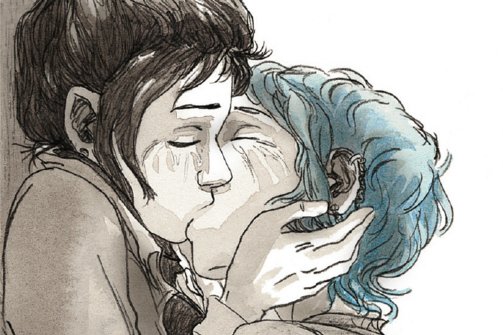
Eeeeeeeeee! via The Daily Beast
On the off chance you don’t win, you can grab a copy of Blue Is The Warmest Color right here. And go see the movie!
Update: the winners of the books are Commenter #94, Theresa, and Commenter #161, Ariel! You’ll be seeing us in your inbox soon to get your deets! Congrats!
Giveaways are not open to employees of Autostraddle.com or their immediate family/kittens.
Lesbian Film “Blue is the Warmest Color” Wins Cannes Palme D’Or, And Not Just Because of The Sex Scene
Queer movies have an interesting history at awards shows. At least, when looking at one of the biggest accolades in the business, the Oscars, it’s always been a mixed bag in terms of how they treat movies about LGBTQ people. On the one hand, they’re usually nominated, and actors from Sean Penn to Hilary Swank have a history of picking up trophies for playing LGBTQ characters. On the other hand, they rarely win the top prize – most controversially with Brokeback Mountain being passed over for Crash in 2005.
Yet another one of the titans of film awards, the Cannes Film Festival, did decide to give its top prize, the Palme d’Or, this year to a queer-themed film. The French film Blue is the Warmest Color (or La Vie d’Adèle – chapitre 1 & 2), which focuses on a lesbian relationship between two adolescent girls – one in high school and one an art student – grabbed the coveted trophy this year. What’s particularly interesting is that, in an unusual move, Cannes jury chair Steven Spielberg decided that the award should be shared among the director and the two lead actresses, Léa Seydoux and Adèle Exarchopoulos because they were “central to the film’s success.”
The film is directed by Abdellatif Kechiche, a French-Tunisian director who has a history of films focusing on Arab minorities in the French suburbs, including Games of Love and Chance (2003) and The Secret of the Grain (2007). In an interview with The Upcoming, it’s noted that a lot of Kechiche’s films focus on a theme of “social justice,” but with regard to Blue is the Warmest Color, he talks more about the girls’ class divide than about homophobia as the source of that tension: “Emma belongs to an elite: intellectual, artistic. Each of my heroines is confined to her social class. The difficulties they have with their relationship… and ultimately what the film is about… is their social difference, since it generates a difference in their personal aspirations. ” He insisted he wanted to film it “like any other love story” rather than focus on any tension from homophobia, which he says “would be more or less tolerated, or understood, by the world around them,” and that he “has nothing militant to say about homosexuality.”
Even if Kechiche says he didn’t make the movie for political reasons having to do with sexual orientation, others don’t seem unwilling to use it for those purposes, with the Dhaka Tribune reporting that “the [Cannes] film festival’s director immediately urged the large crowds protesting against gay marriage in Paris to go and see it.” And even Kechiche himself, when reflecting on homophobia in Tunisia, says that he hopes “this is going to do Tunisian youth some good… a revolution isn’t complete unless it’s also a sexual revolution.”
And indeed, some reviewers seem to think the film does, in fact, due a lot to explore the myriad issues facing queer youth, from issues of labels to coming-out. As Shaun Munro’s review for The Film School Rejects puts it:
Blue leaps off to examine a wide gamut of emotional and social issues that define relationships, such as the problem that age differences can create, the fallacy of basing all your happiness on the partner you’re with and Adèle’s complicated placement on the sexual spectrum — is she a lesbian or bisexual? Also, Kechiche broaches the perception of lesbian relationships among youngsters – the gay panic among Adèle’s friends once they suspect her orientation is startling – and the inevitable awkwardness of deciding whether or not to come out to one’s parents, making for a hilariously awkward dinner scene at Adèle’s home.
All that being said, one particular aspect of the movie – the one that, unfortunately, seems to be getting all the press – doesn’t seem like it’d be too amenable to changing minds of anti-gay French citizens. What seems to be driving critics crazy about this film is the supposedly “infamous” 10-to-20-minute (reviews vary) sex scene between the couple. Honestly, it’s hard to say if some media’s quickness to call this “porn” is emphasis of a double standard; 10+ minutes is fairly long for a continuous sex scene, and recent controversies like the one over Blue Valentine’s rating show that the film world can still be prudish even about straight sex. But plenty of reviewers seem to be particularly weirded out by how much time the scene took up, often focusing attention away from the rest of the film. For example, New York Magazine’s Vulture even titles their article “The Ten-Minute Lesbian Sex Scene Everyone is Talking About At Cannes,” and seems more focused on audience reaction than anything else: “I clocked the first sex scene between Adèle and Emma — replete with fingering, licking, and, as a friend called it, ‘impressive scissoring’ — at an approximate ten minutes. Audience walkouts began around minute nine. That turned into spontaneous applause (and relieved laughter), when the women climaxed and finished a minute later.” Yet, they do ultimately conclude that the scene was a necessary element of the film.
Of course, it’s one thing for mainstream, mostly-straight reviewers to get upset by the idea that this is “porn.” But interestingly enough, Julie Maroh, the author of the graphic novel (Le Bleu est une couleur chaude) which inspired the film, seems to share some of their criticisms, at least with regard to the sex scene itself. She writes:
It appears to me that this was what was missing on the set: lesbians.
I don’t know the sources of information for the director or for the actresses (who are all straight, unless proven otherwise) and I was never consulted upstream. Maybe there was someone there to awkwardly imitate the possible positions with their hands, and/or to show them some porn of so-called “lesbians” (unfortunately it’s hardly ever actually for a lesbian audience). Because – except for a few passages – this is all that it brings to mind: a brutal and surgical display, exuberant and cold, of so-called lesbian sex, which has turned into porn, and made me feel very ill at ease. Especially when, in the middle of a movie theatre, everyone was giggling. The heteronormative laughed because they don’t understand it and find the scene ridiculous. The gay and queer people laughed because it’s not convincing at all, and found it ridiculous. And among the only people we didn’t hear giggling were the potential guys too busy feasting their eyes on an incarnation of their fantasies on screen… As a feminist and lesbian spectator, I cannot endorse the direction Kechiche took on those matters.
Yet, contrary to some of the reports, Maroh’s issue seems to be mainly with the sex scene, and overall, is not unhappy about the film:
Whatever it may be, I don’t see the movie as a betrayal. When it comes to adapting something, I believe that the notion of betrayal should be reconsidered… Kechiche went through the same process as any other reader, he entered it and identified in a unique way… The conclusion in Cannes is obviously wonderful and breathtaking… I remain absolutely overwhelmed, amazed, and grateful for these circumstances. Last night I realized this is the first time in Cinema’s history that a comic book has inspired a Palme D’Or movie and this idea petrified me. It’s a lot to carry.
Overall, it may indeed say a lot about the place of lesbians in media and culture that so much of the coverage of Blue is the Warmest Colour, from queer and straight media alike, seems to focus on the sex scene. In fact, though, many of the reviews stress the fact that the movie is about love — as opposed to sex — as the reason to see it. As The Guardian Film Blog’s headline puts it, “Blue is the Warmest Colour won at Cannes because it jumpstarts the heart,” noting the “passionate film-making,” “extraordinary and compelling intimacy” and “remarkable, courageous performances,” summarizing it as “a devastatingly emotional film about a love affair between two young women, with unforgettable notes of sensuality and sadness.”
Perhaps that should be the real take away from Blue‘s win at Cannes – that regardless of intensity of sexual content or lack thereof, queer films have proven their ability to tear at the heartstrings of viewers regardless of sexual orientation. And that’s the real reason they keep earning awards.
